My mouthwatering Yakitori recipe features chicken and scallion skewers coated in a caramelized, savory-sweet glaze. These tender and juicy skewers are easy to cook in the broiler for a taste of Japanese pub food at home.
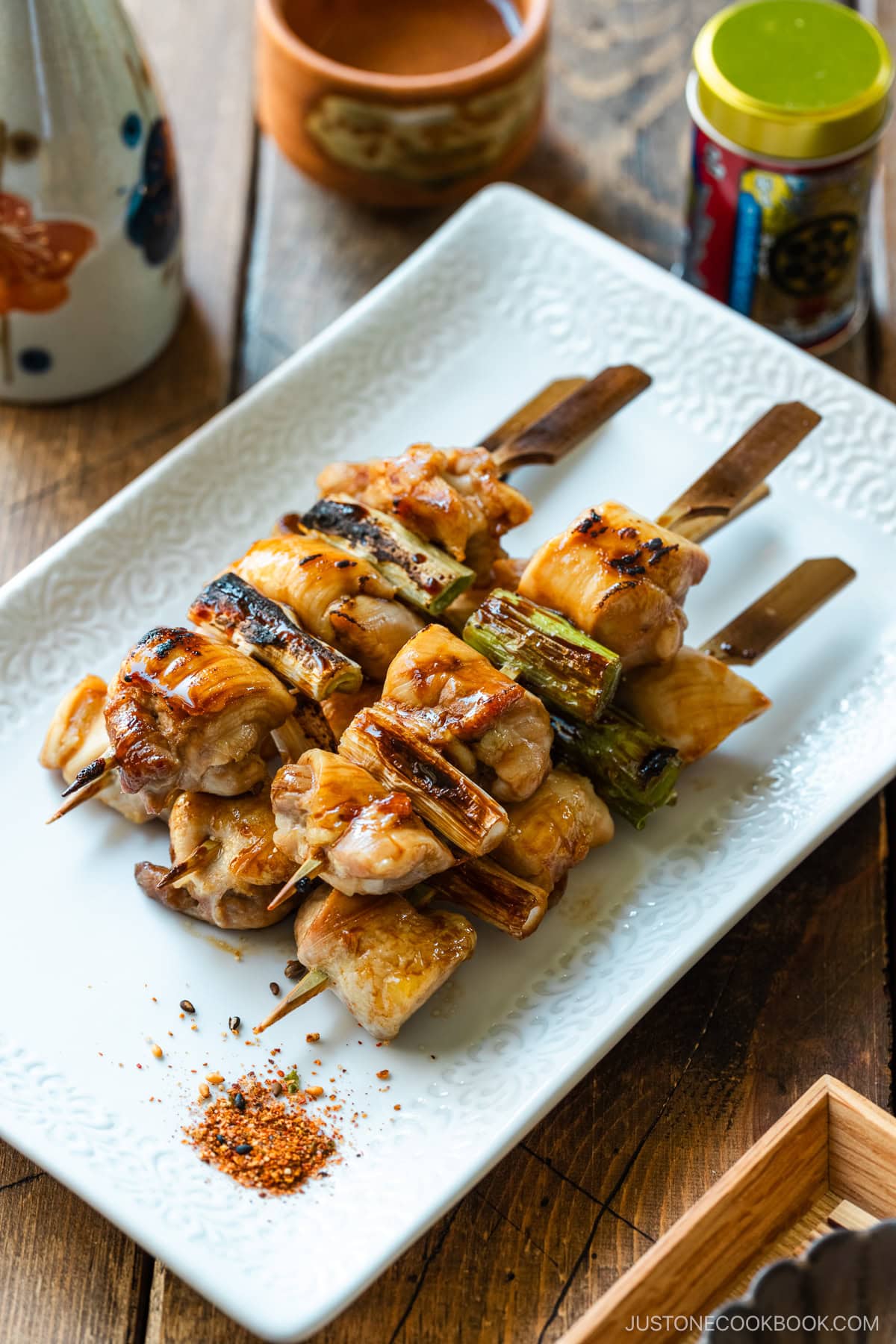
Yakitori (焼き鳥) is one of the many dishes my family and I bond over when we visit Japan. You can smell the glazed chicken skewers a mile away, and the flavor is equally rich and complex. While grilling is certainly an option, I’ll show you my preferred method of making it in the broiler and share other convenient tips in my Yakitori recipe.
Need more Japanese chicken dishes? Try my Chicken Teriyaki, Chicken Chashu, or Karaage next!
What is Yakitori?
Yakitori refers to Japanese-style grilled chicken skewers enjoyed in specialty restaurants and Japanese gastropubs called izakaya. Translating to “grilled” (yaki) + “chicken” (tori), versions of this dish have been a staple of Japanese cuisine for centuries. In countless yakitori restaurants around Tokyo, notably in Shinjuku’s Yakitori Alley, it’s typically cooked over a hot Japanese binchotan charcoal grill. It’s easily adaptable to other cooking methods so you can make it at home, too.
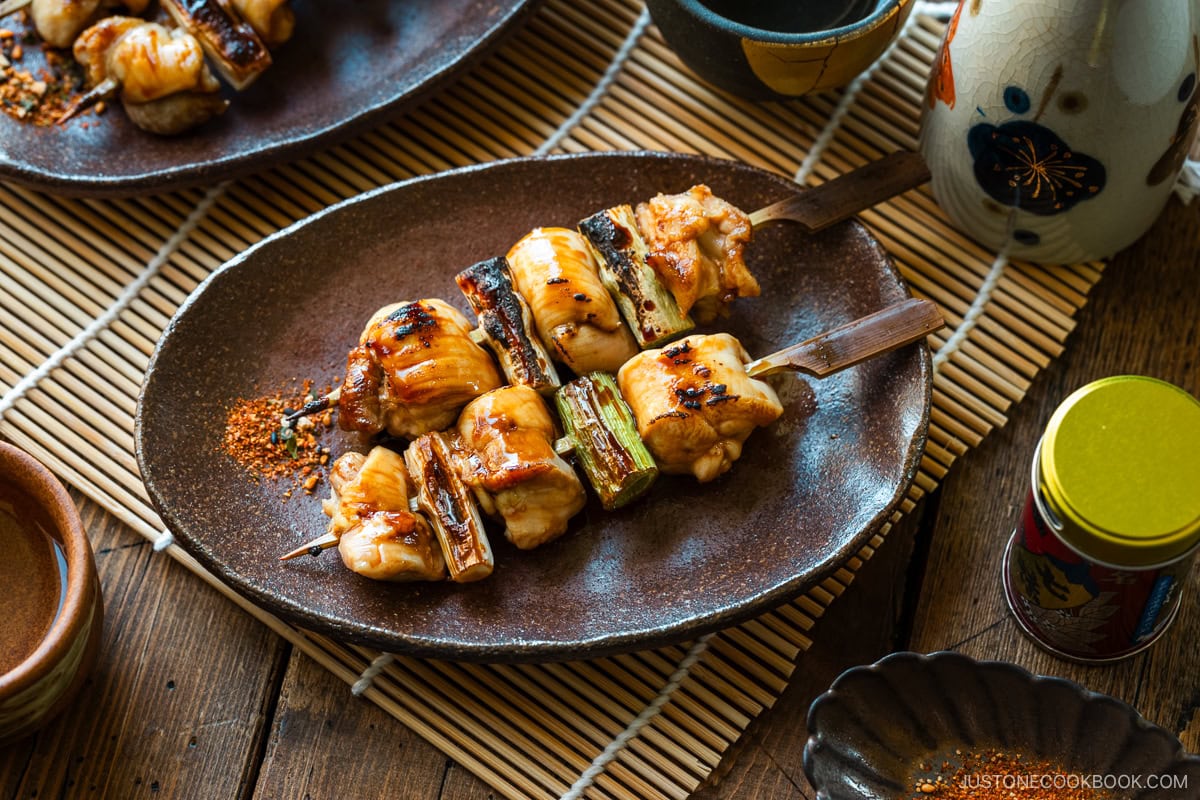
Why I Love This Recipe
- Easy to prepare in advance – You can pre-soak the skewers and make the sauce well in advance, so all you have to do is skewer, baste, and cook.
- Convenient broiler method – It cooks in just 10 minutes! I love the nice char and subtle crispness on the meat from broiling.
- Simple sauce ingredients – This savory sauce uses four classic Asian pantry staples and yields an irresistible caramelized flavor.
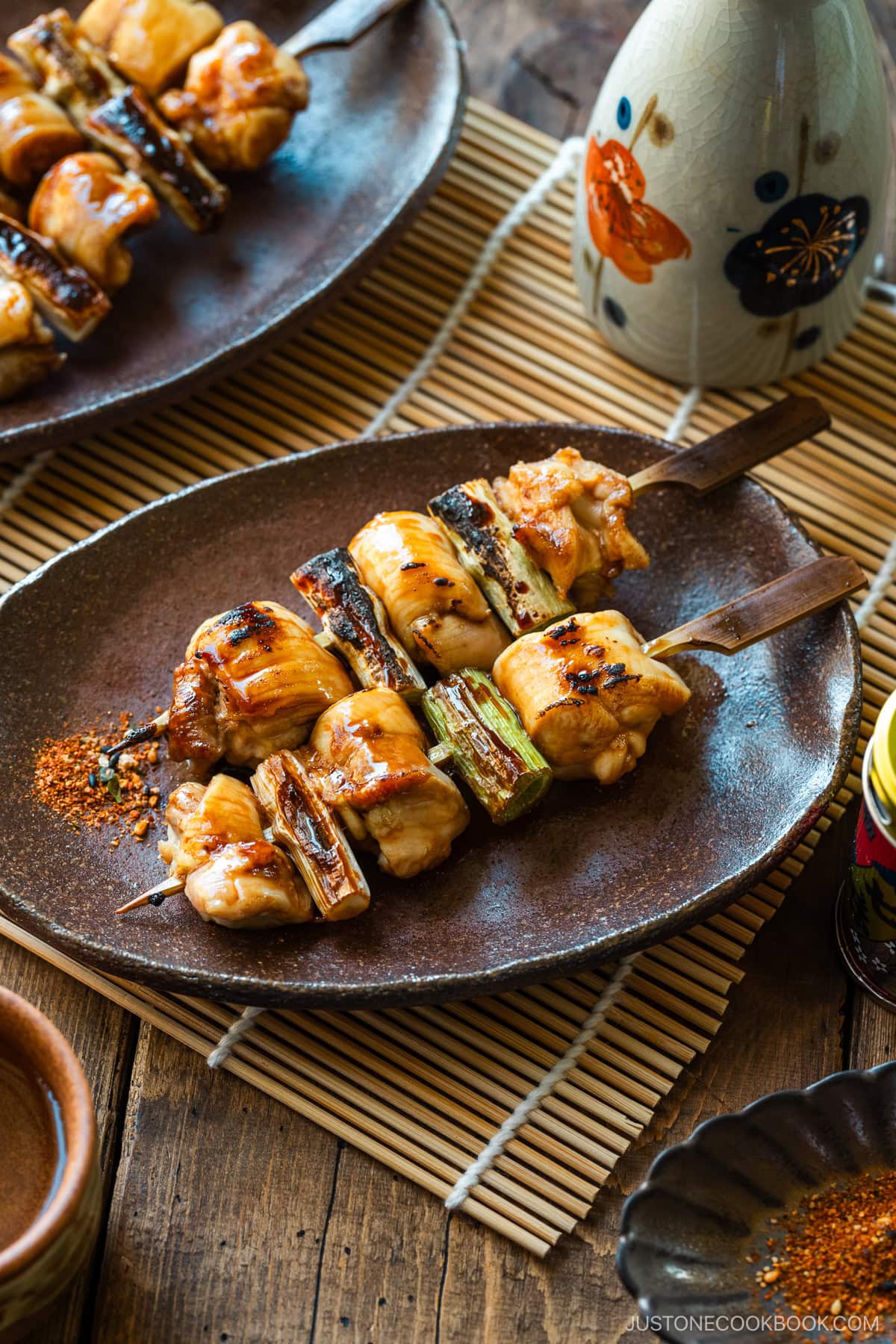
Ingredients for Yakitori
- Soy sauce
- Mirin
- Sake
- Brown sugar
- Tokyo negi (or green onions/scallions)
- Boneless, skinless chicken thighs
- Oil – or cooking spray
- Shichimi togarashi (Japanese seven spice) – optional
Find the printable recipe with measurements below.
Jump to RecipeSubstitutions
- Soy sauce: Use coconut aminos or tamari for gluten-free.
- Chicken: tThis grilled chicken thigh and scallion skewer called negima yakitori is one of the most popular versions. While traditional yakitori uses every chicken part, from the meat to gizzards and cartilage, you can use any protein, including sliced beef, pork loin, and pork belly.. To use ground chicken, try my Tsukune recipe.
- Green onions/scallions: For a different flavor, I suggest trying mushrooms, shishito peppers, shiitake mushrooms, zucchini, or asparagus. You can make my plant-based Yakitori-style Grilled Vegetables for a vegan/vegetarian version.
- Sake: If you can’t find sake, I recommend using dry sherry or Chinese rice wine instead.
- Mirin: If you don’t have mirin, use 2 Tbsp sake/water + 2 tsp sugar for every tablespoon of mirin.
Key Equipment
- Bamboo skewers – I used teppogushi or “gun skewers” that have a flat handle for easy gripping.
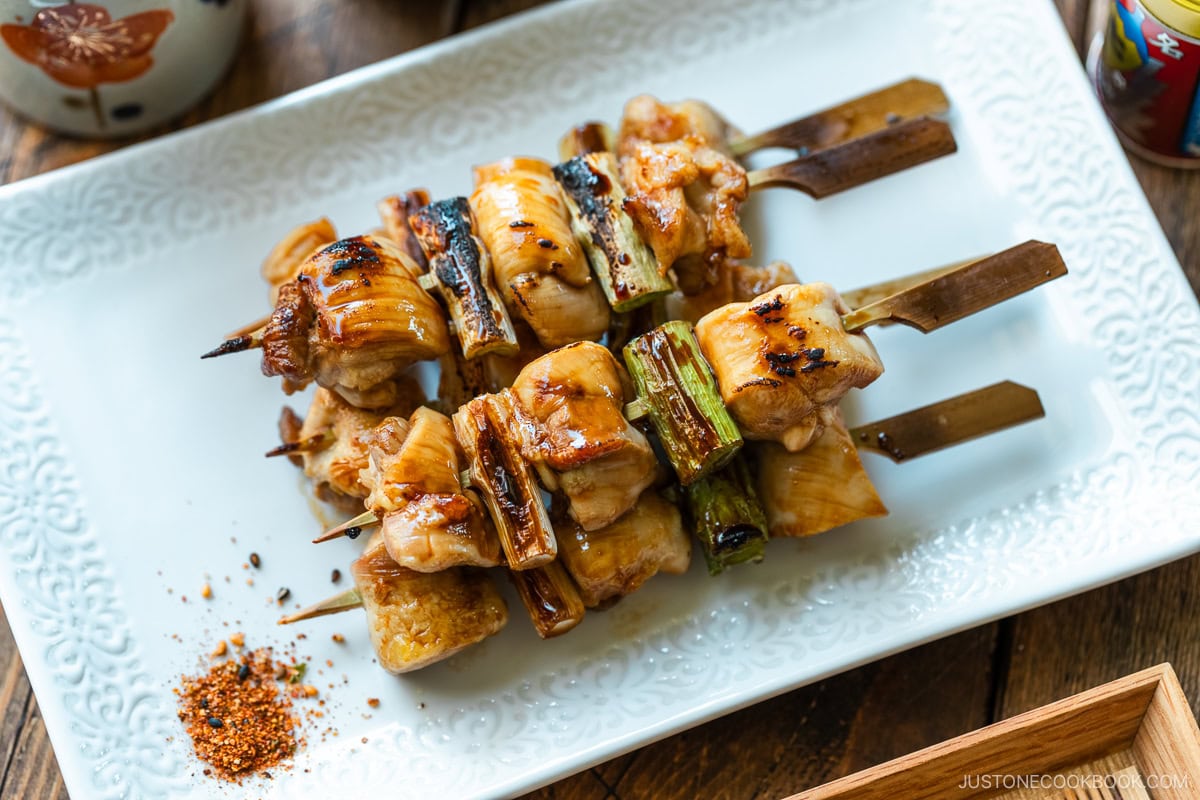
How to Make Yakitori
Preparation
Step 1 – Prepare the scallions and make the sauce. Slice the base of the scallions into bite-sized pieces (1¼ inches or 3 cm). Cut the green parts in half crosswise. Add the green parts and the sauce ingredients to a small saucepan and bring to a boil. Then, reduce to a simmer until the sauce thickens, about 30 minutes.
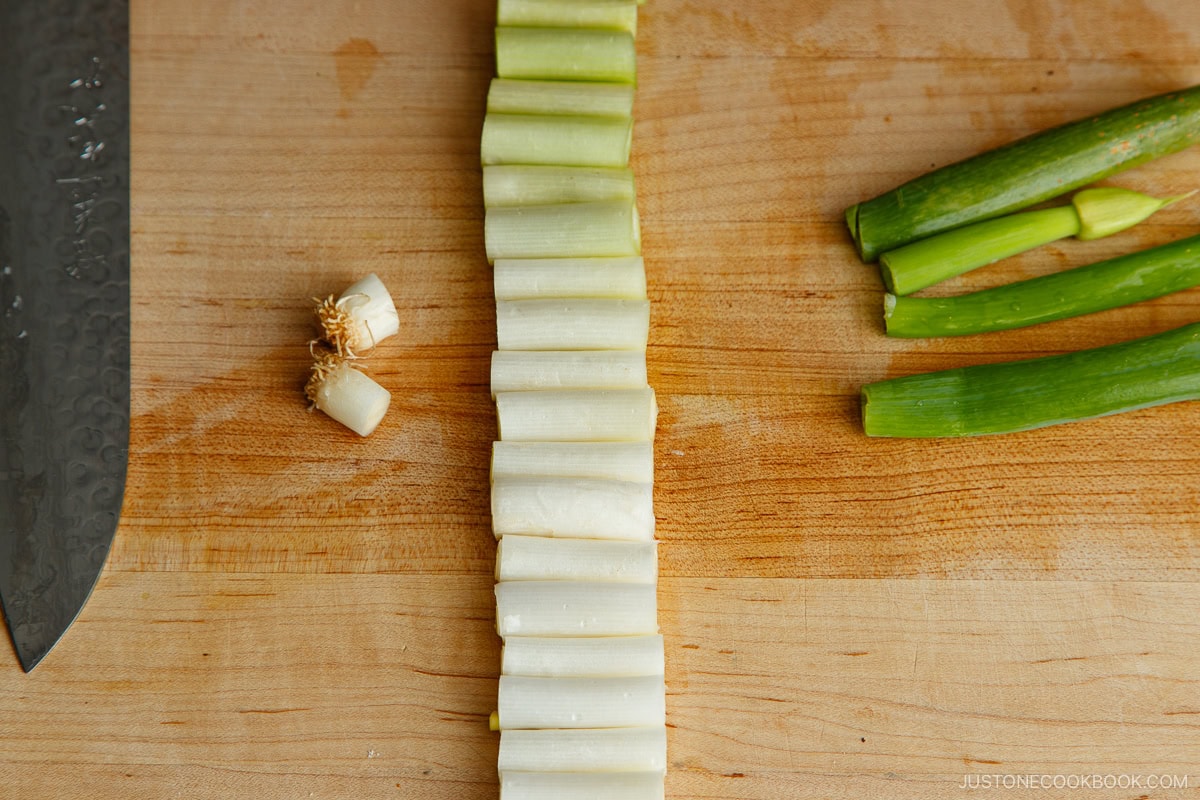
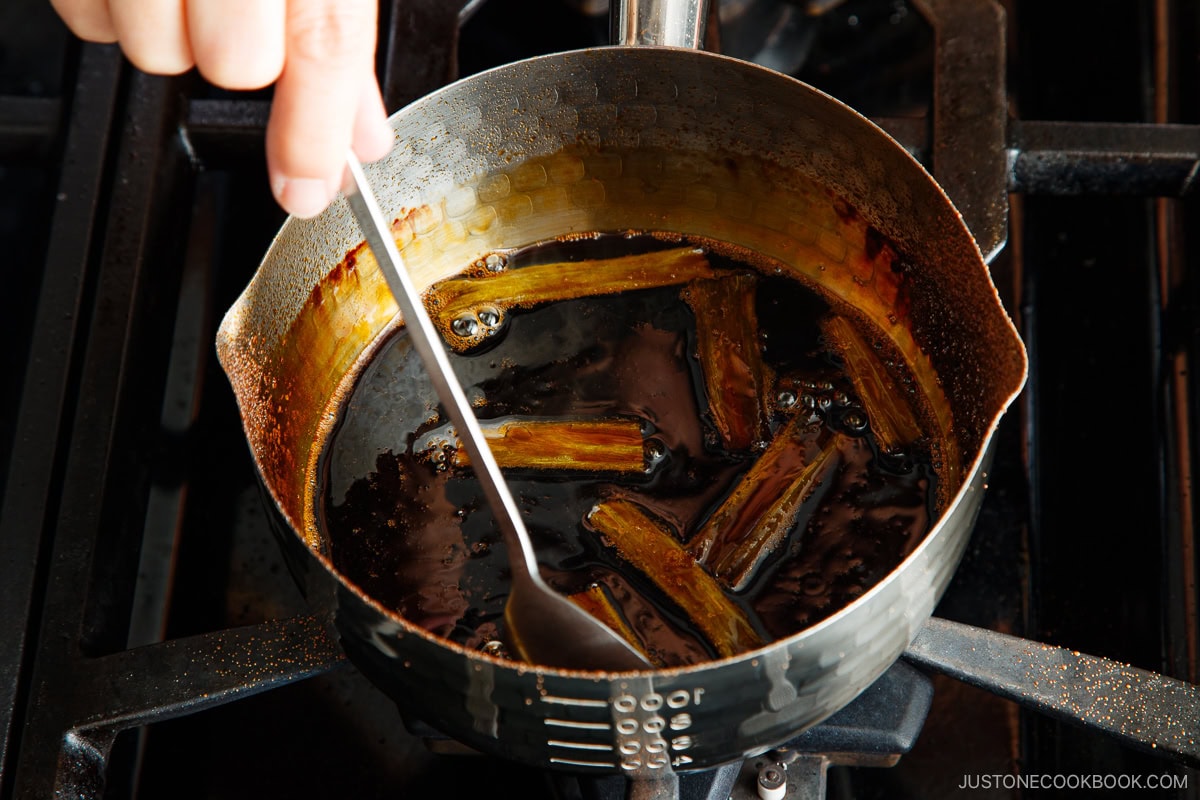
Assemble
Step 2 – Assemble the skewers. Cut the chicken thighs into 1¼-inch (3-cm) squares. Skewer the pieces of chicken and green onion, and repeat. Continue until you use all the skewers.
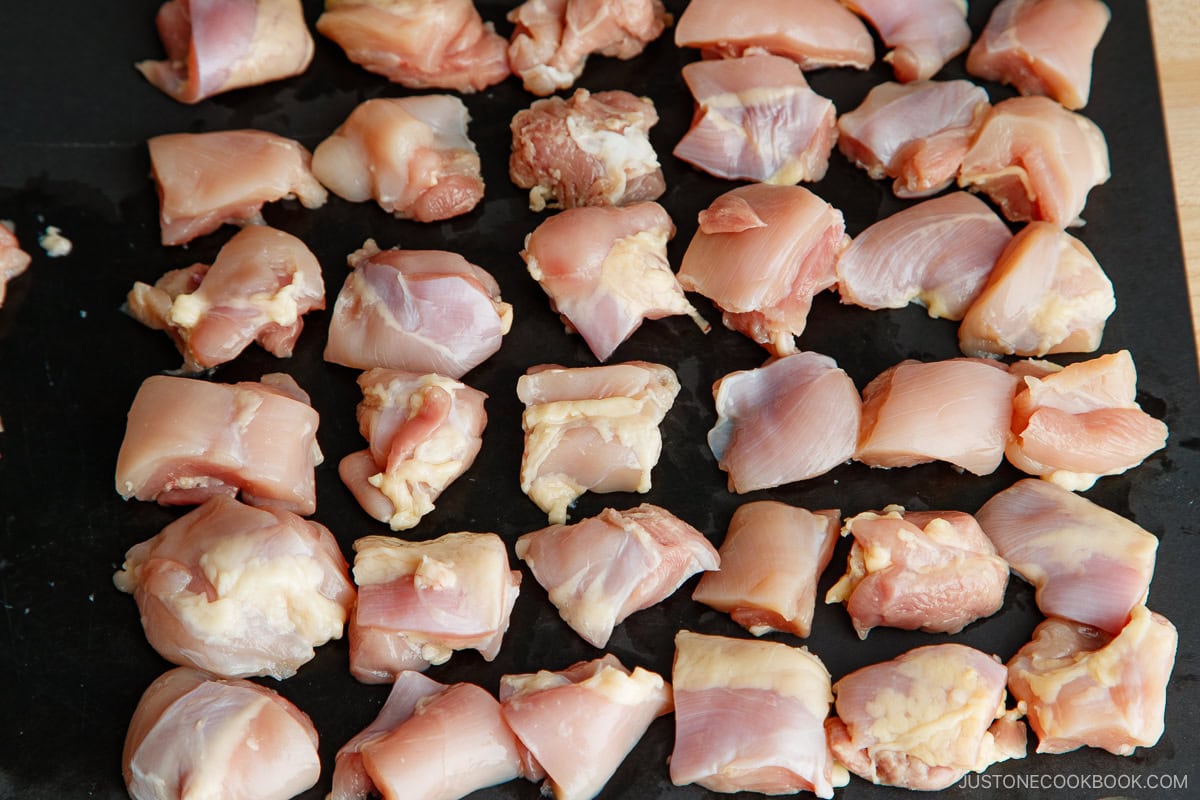
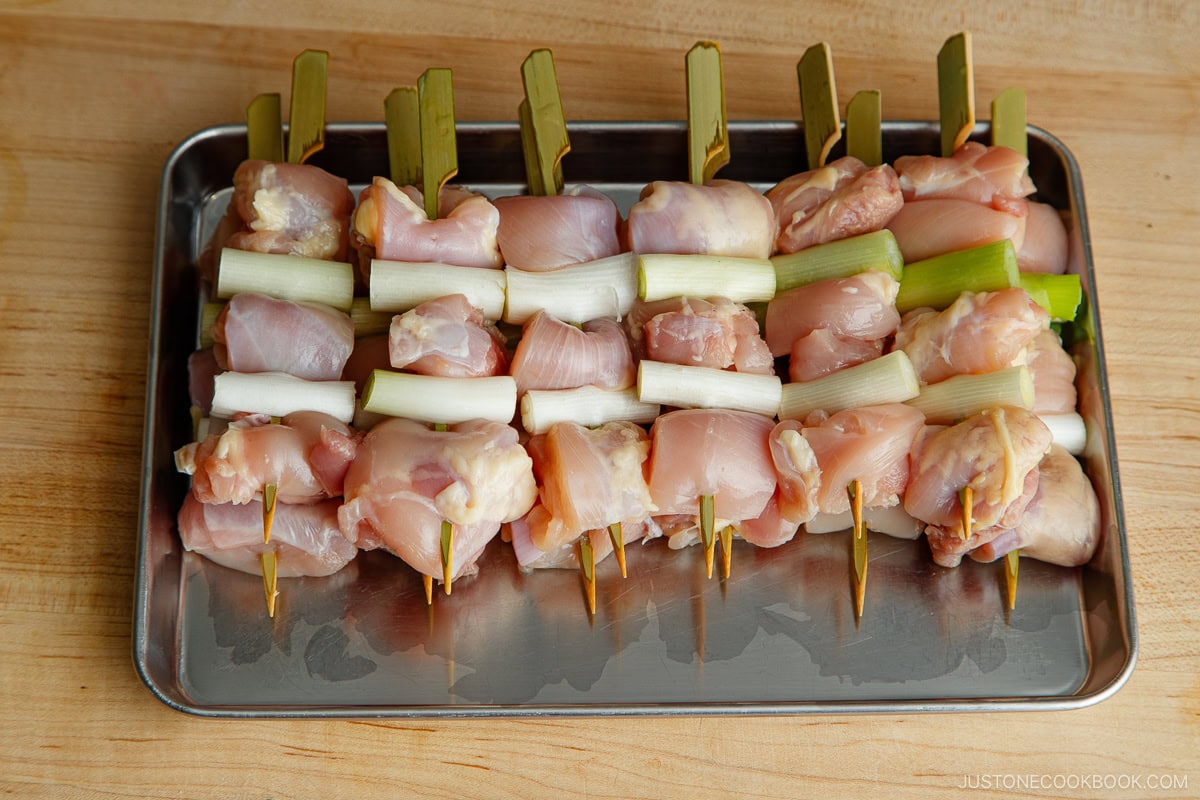
Cooking
Step 3 – Prepare the cooking equipment. Preheat the broiler, line a baking sheet with aluminum foil, and place a wire rack on top. Grease the rack with oil and place the skewers on it.
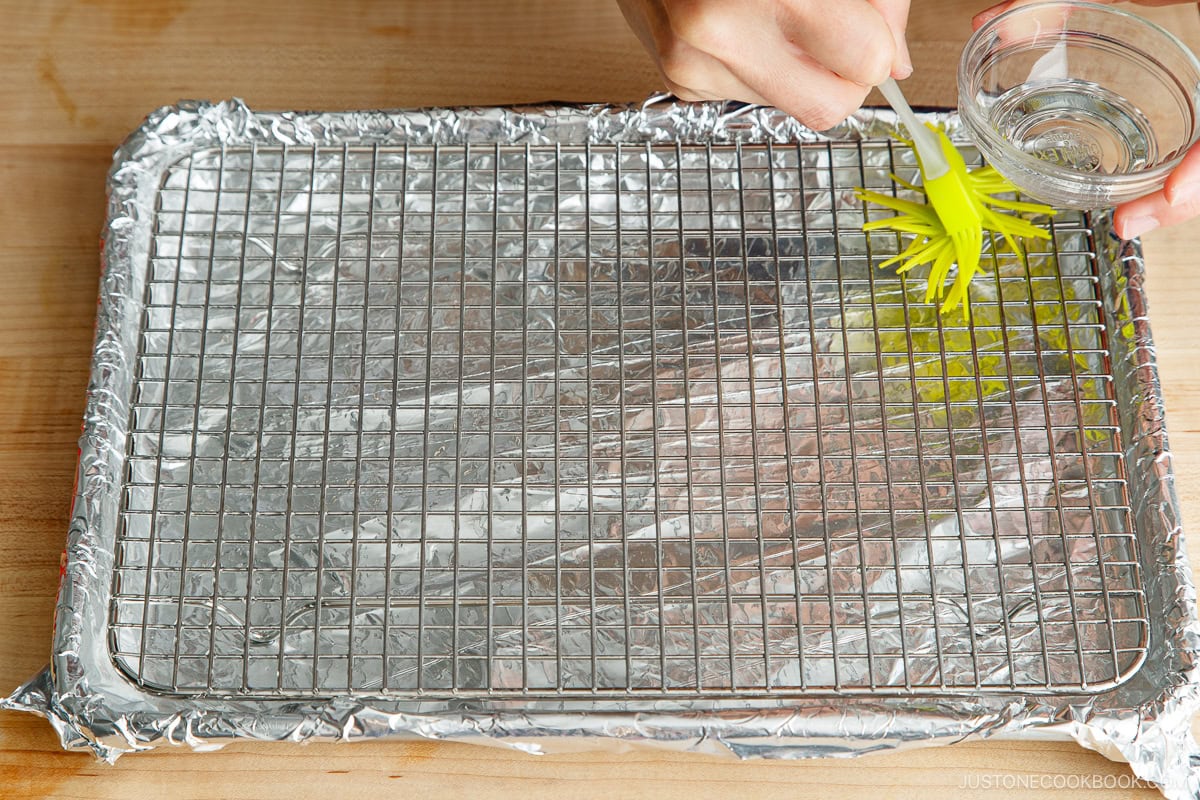
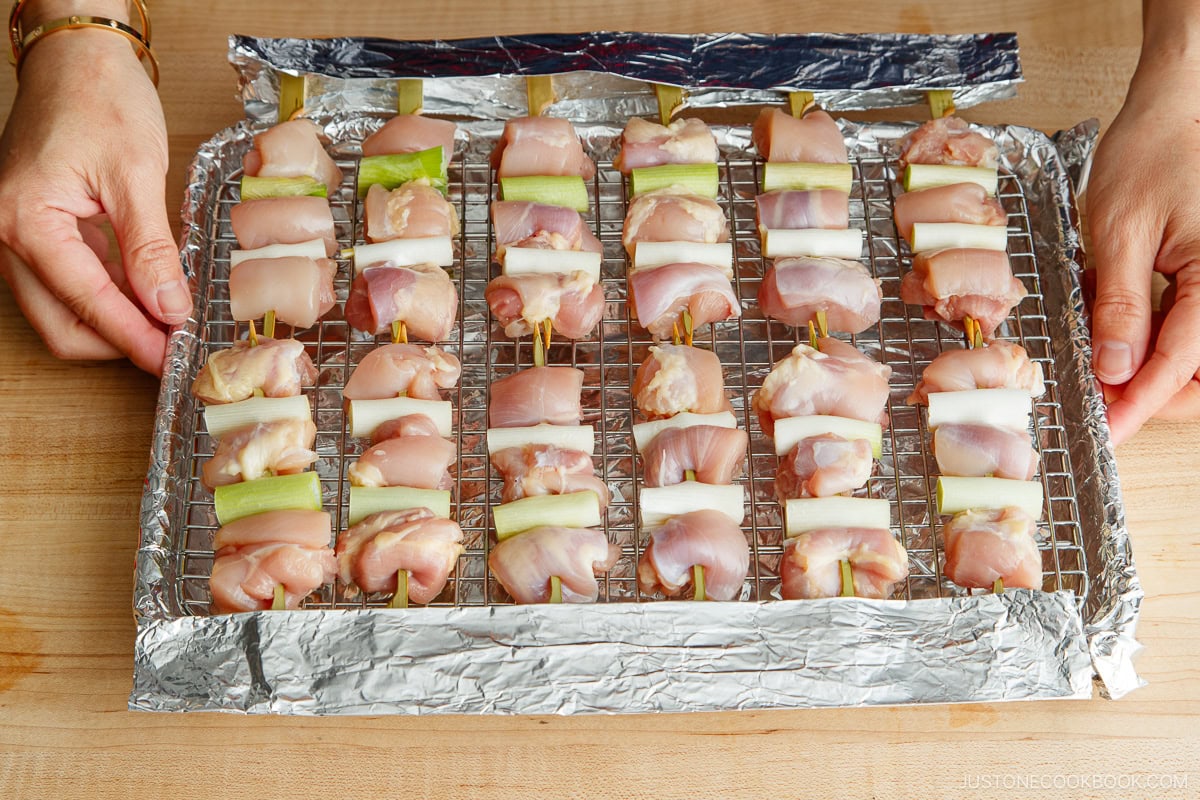
Step 4 – Broil and serve. Broil the skewers for 6 minutes, brush with sauce on both sides, and broil for another 3–4 minutes. Flip once more, brush with more sauce, and broil for 1–2 minutes.
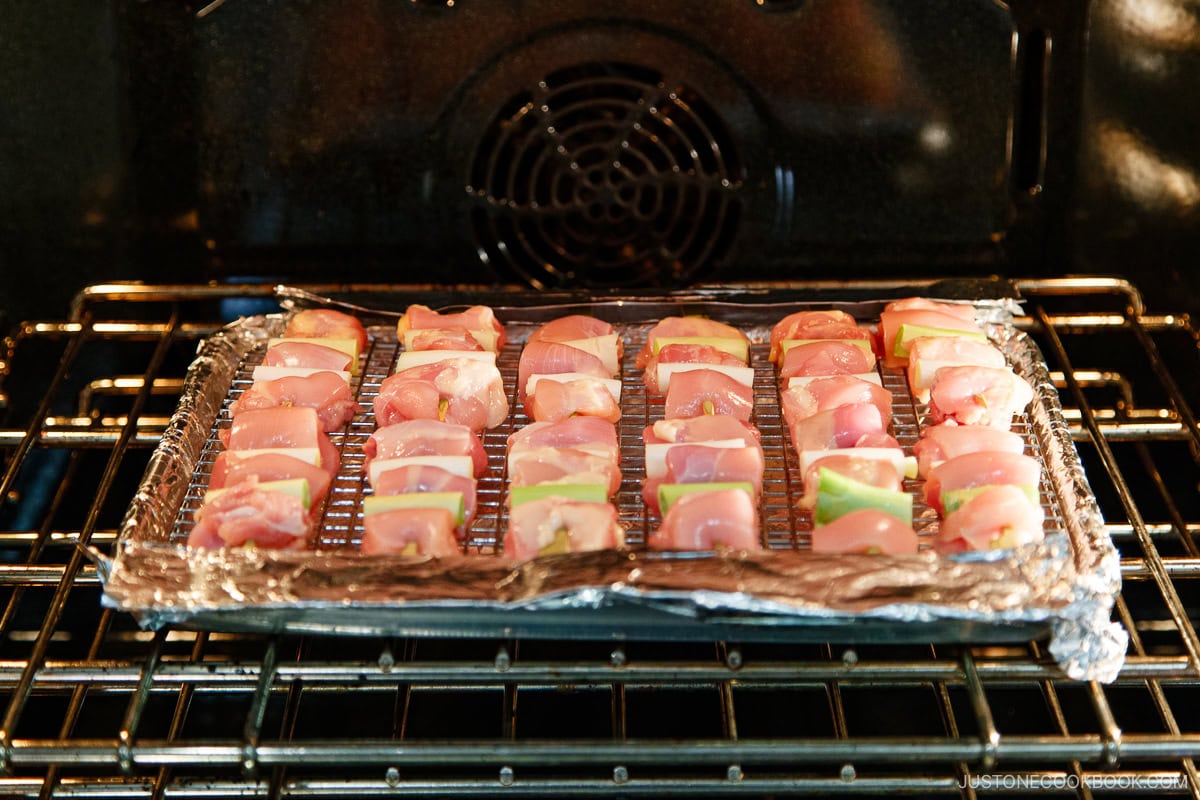
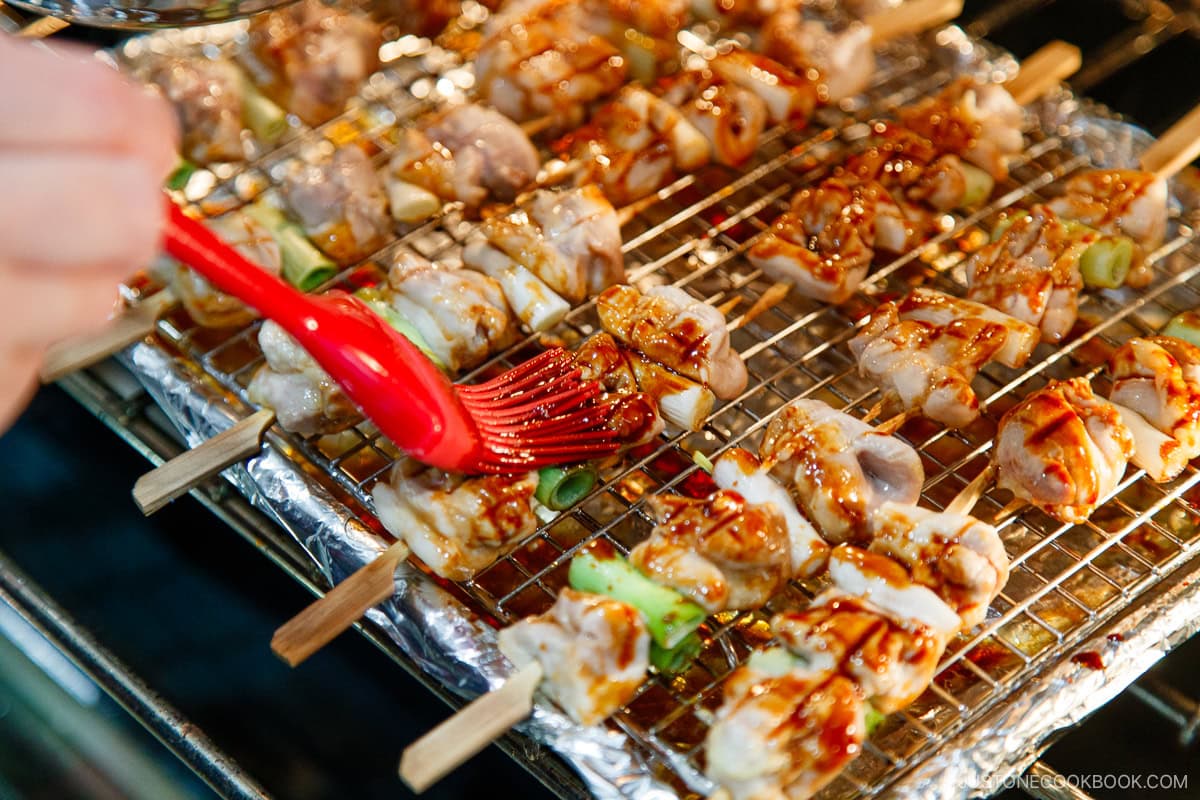
Step 5 – Serve. Serve immediately with additional sauce and shichimi togarashi, if desired.
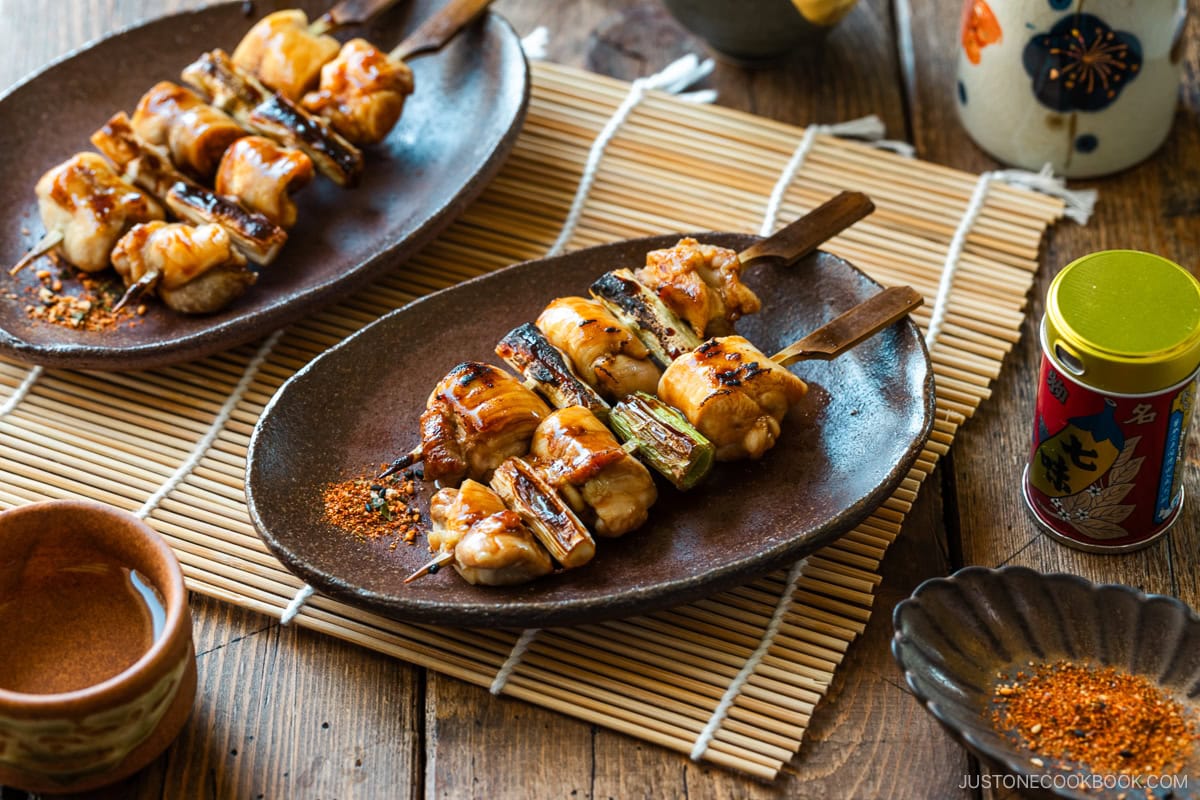
Nami’s Recipe Tips
- Skewer the chicken on a flat surface. I suggest folding the chicken in half and tilting the skewer at a 45-degree angle. Pierce the meat, then lower the skewer so it’s parallel to the work surface and thread the meat through.
- Leave no room between the chicken and scallions. Tightly pack the skewers so there is no exposed bamboo to overheat and burn.
- Don’t skip soaking the skewers. It’s tempting to omit this step, but please soak the bamboo skewers for at least 30 minutes unless you’re using reusable metal skewers. Otherwise, they could burn.
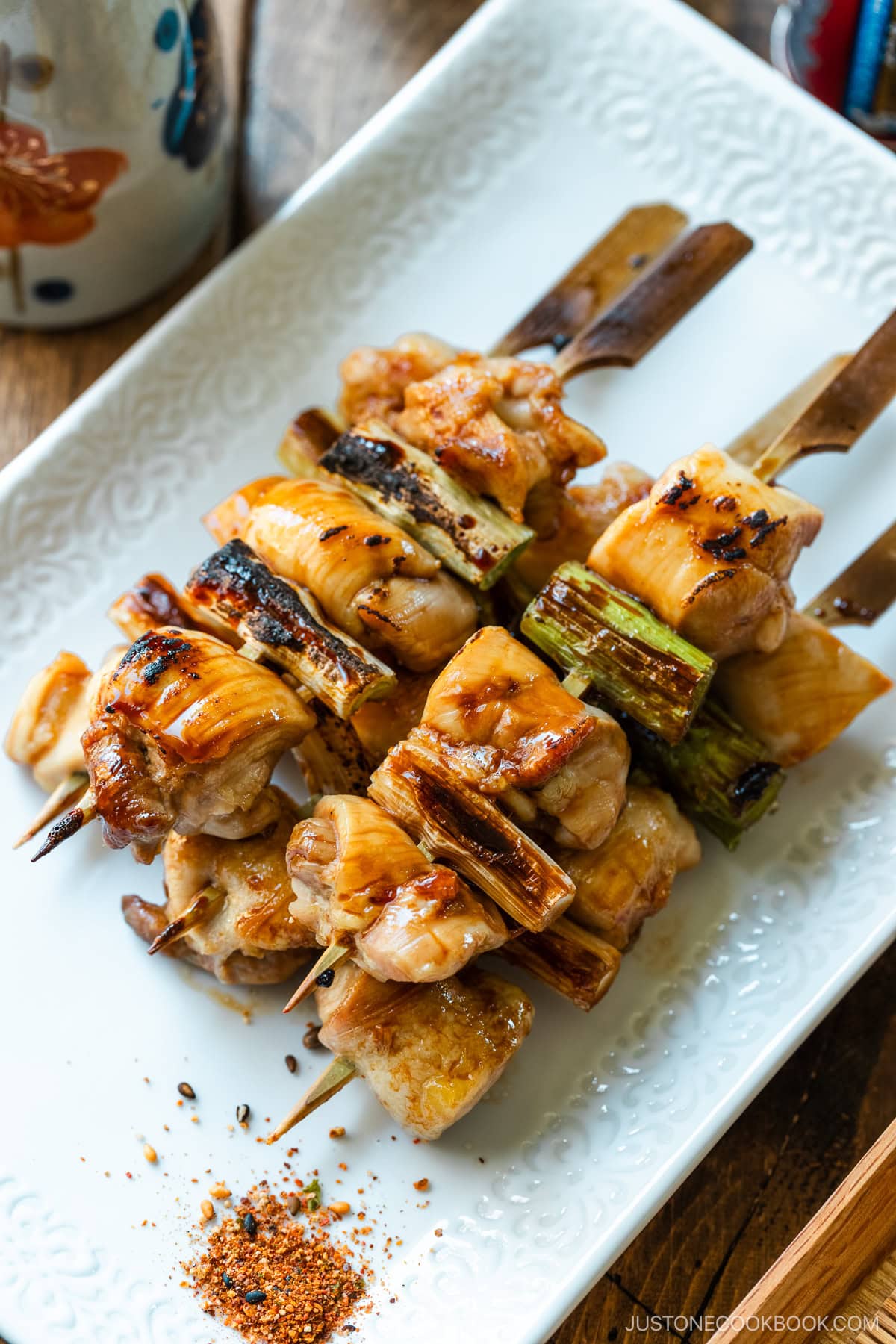
Variations and Customizations
Yakitori is a very forgiving recipe that you can easily modify depending on what you have on hand. Here are some of my suggestions.
- Pan-fry it. If you’d rather skip the broiler, heat a well-oiled pan over medium heat. Sear the skewers (working in batches) for 5 minutes on each side. Then, cover and cook on low heat for 2–3 minutes. Add the sauce and cook until caramelized.
- Grill it over a flame. Preheat the grill to medium-high heat and cook the skewers on both sides, basting periodically until the chicken is fully cooked.
- Use other cuts of chicken. Chicken breast or chicken tenders work equally well in this recipe. Remember that chicken breast takes less time to cook, so reduce the broiler time by 2–3 minutes.
- Add aromatics to the sauce. Adding fresh garlic or ginger to the saucepan before reducing the sauce can infuse a fresher, more aromatic flavor.
What to Serve with Yakitori
- As a main course – Serve it with Ginger Rice and Homemade Miso Soup on the side.
- With other finger foods – Try Kushikatsu (meat and veggie skewers) or Yaki Onigiri.
- With a salad – Light and refreshing Japanese Cucumber Salad cuts through the richness of the yakitori sauce (tare).
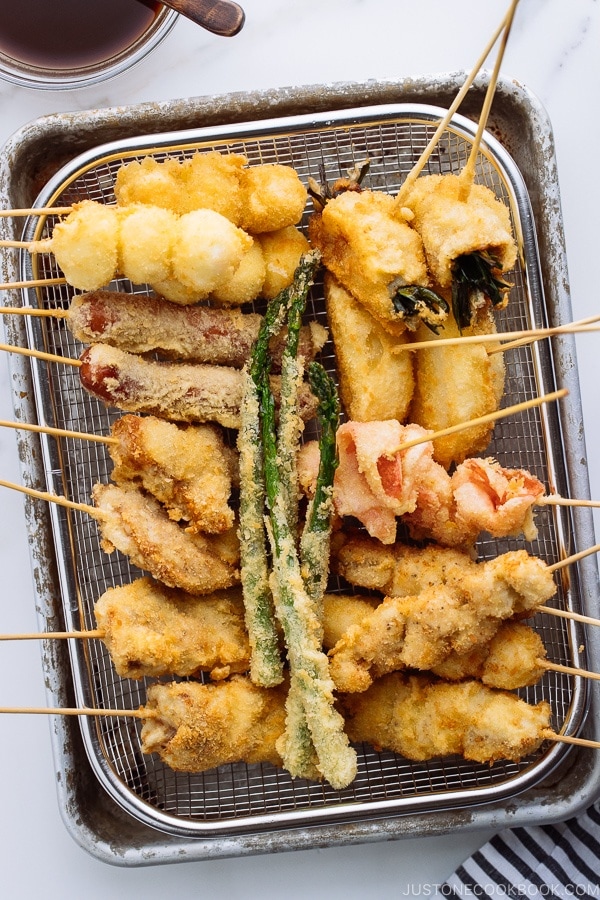
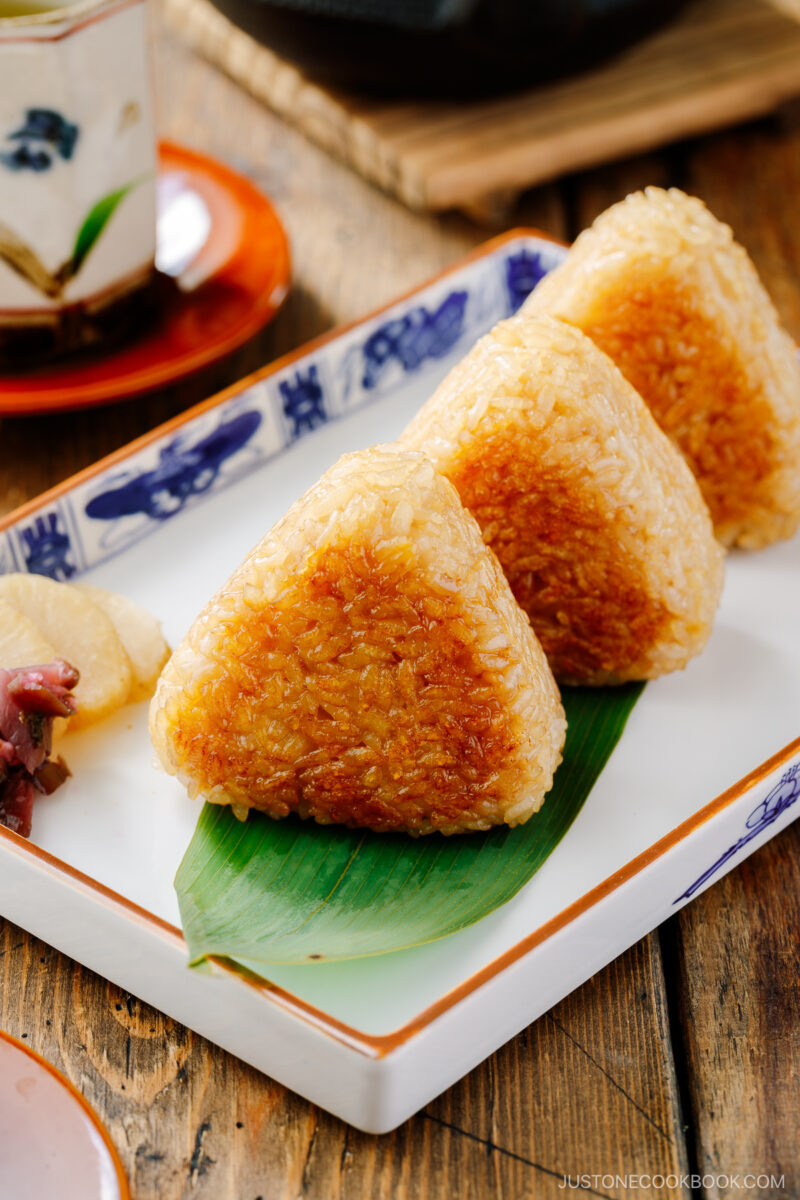
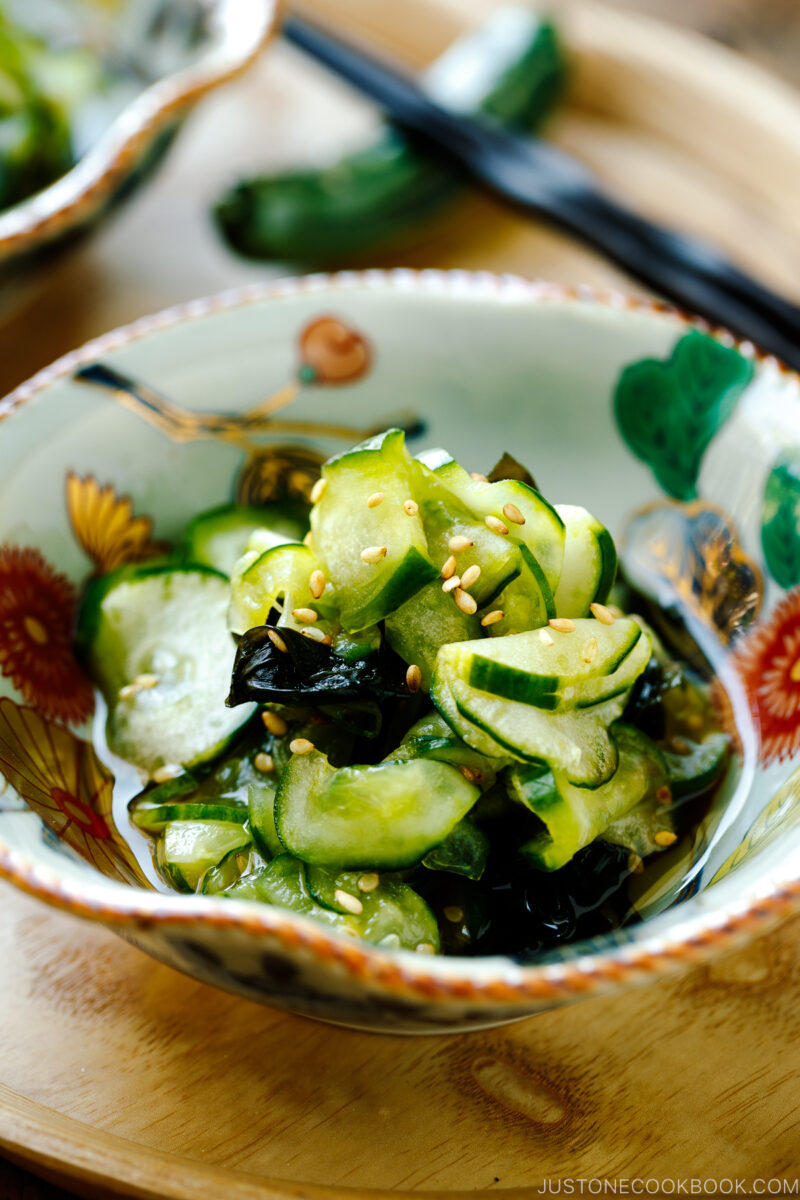
Storage and Reheating Tips
To store: Once cooled to room temperature, store them in an airtight container and refrigerate for up to 3–4 days. You can also freeze it for up to 3 months. Thaw the frozen skewers in the fridge overnight before reheating. Store any unused sauce in an airtight container in the fridge for up to 2–3 months.
To reheat: For the best results, reheat the leftovers in the oven at 350°F (180°C) for 7–8 minutes or until warm.
Frequently Asked Questions
You can make the sauce up to 2–3 months in advance. Simply make it as directed, let it cool to room temperature, then store it in an airtight jar in the fridge until ready to use.
Here are some popular chicken parts perfect for a yakitori recipe: Thigh (momo, もも), breast (mune, むね), tender (sasami, ささみ), skin (kawa, 皮), wings (tebasaki, 手羽先), tail (bonjiri, ぼんじり), cartilage (nankotsu, 軟骨), heart (hatsu, ハツ), liver (rebā, レバー),
gizzard (sunagimo, 砂肝), and ground chicken (Tsukune, つくね).
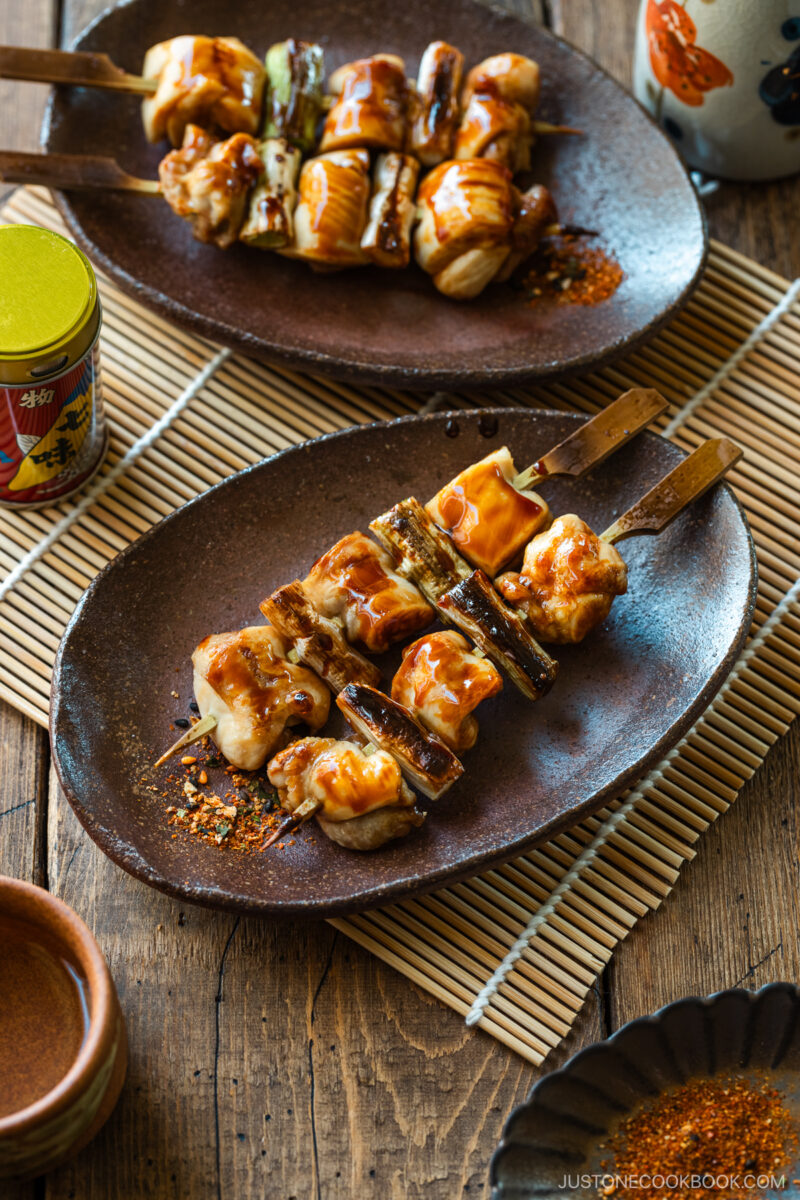
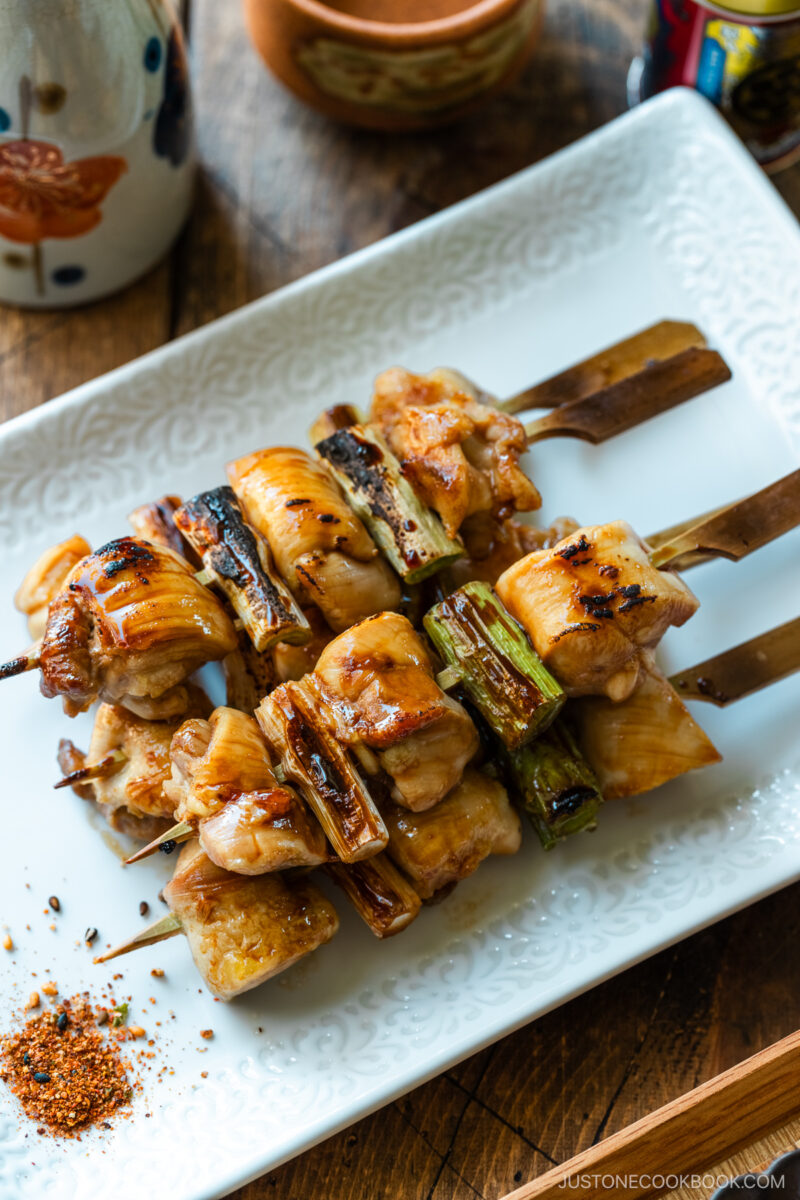
More Izakaya Recipes
If you love this Yakitori recipe, you’re in for a treat with these additional irresistible izakaya dishes.
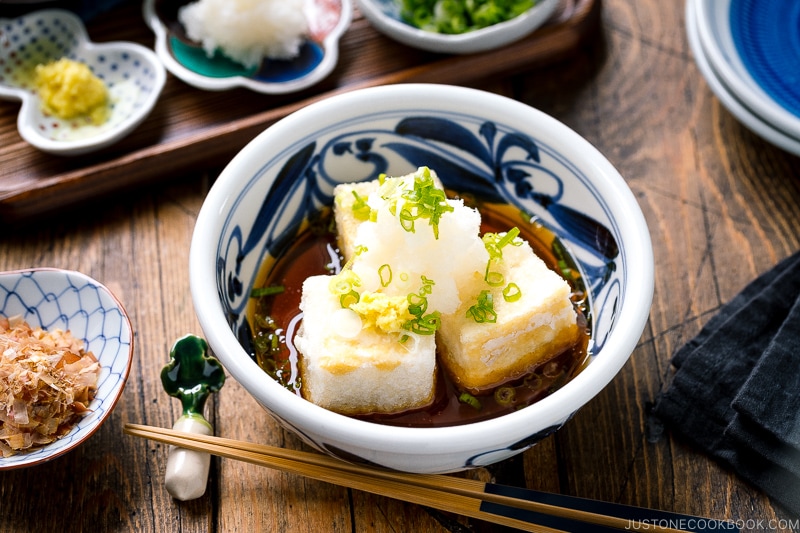
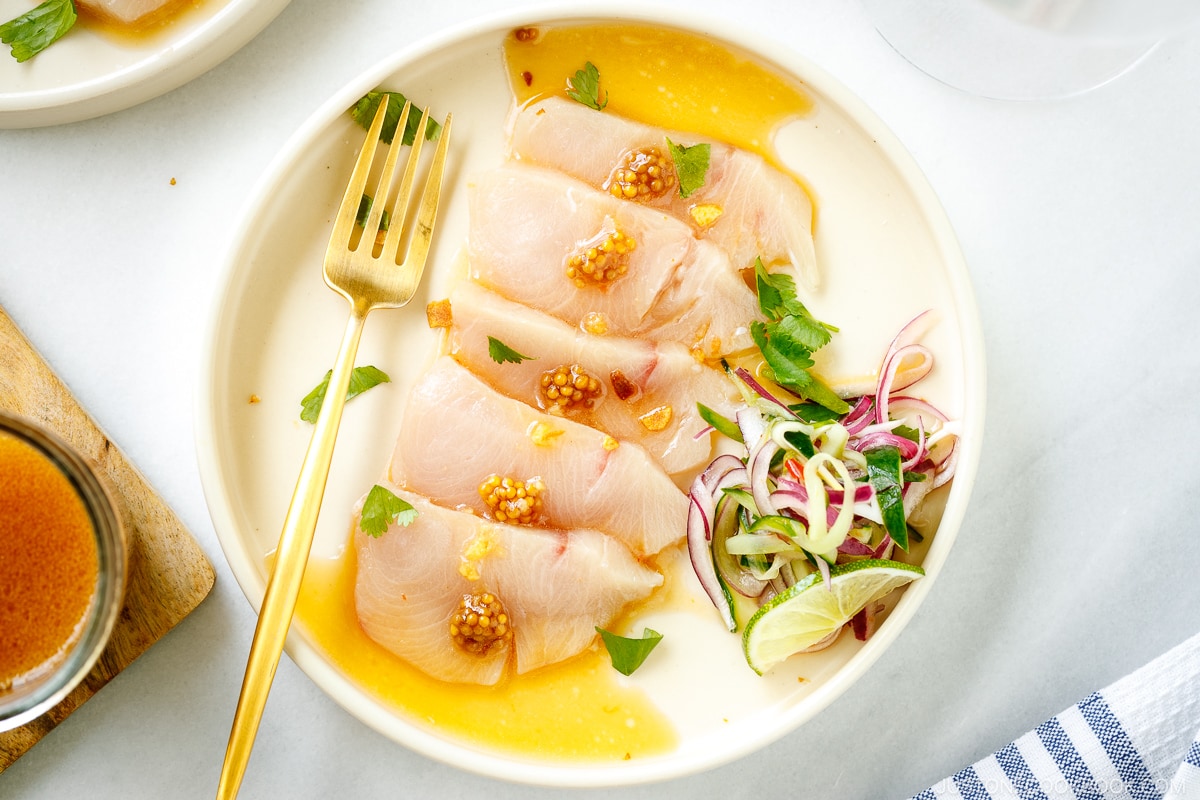
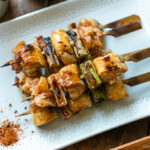
Yakitori Recipe with Homemade Sauce
Video
Ingredients
For the Yakitori Sauce
For the Chicken Skewers
- 2 Tokyo negi (naga negi; long green onion) (or 9 green onions)
- 1 lb boneless, skinless chicken thighs (at room temperature)
- neutral oil (for brushing the wire rack)
- shichimi togarashi (Japanese seven spice) (optional; for a spicy kick)
Instructions
- Gather all the ingredients. For this recipe, I use teppogushi or “gun skewers” that have a flat tab for a handle. You can buy them at Japanese markets or on Amazon. If you can‘t find them, you can use regular bamboo skewers.
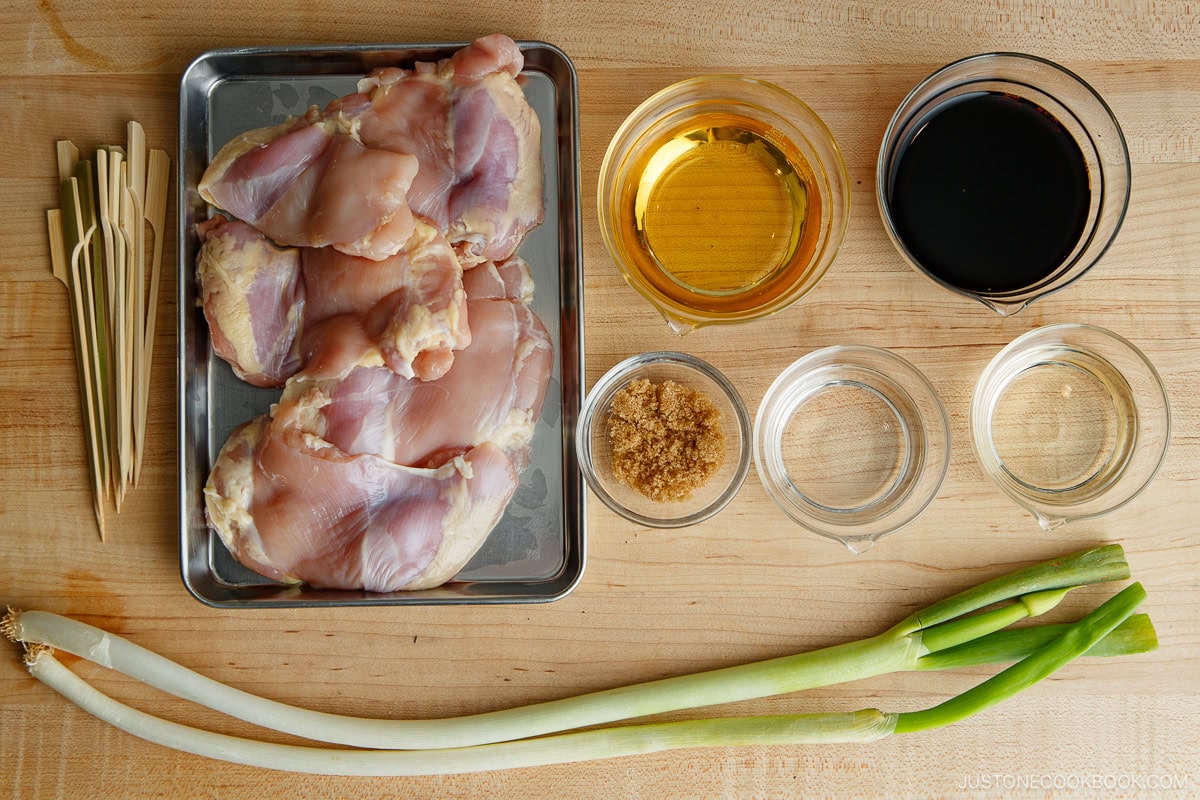
- Soak 10–12 5-inch bamboo skewers in water for 30 minutes (or at least 10 minutes while you're prepping the ingredients).
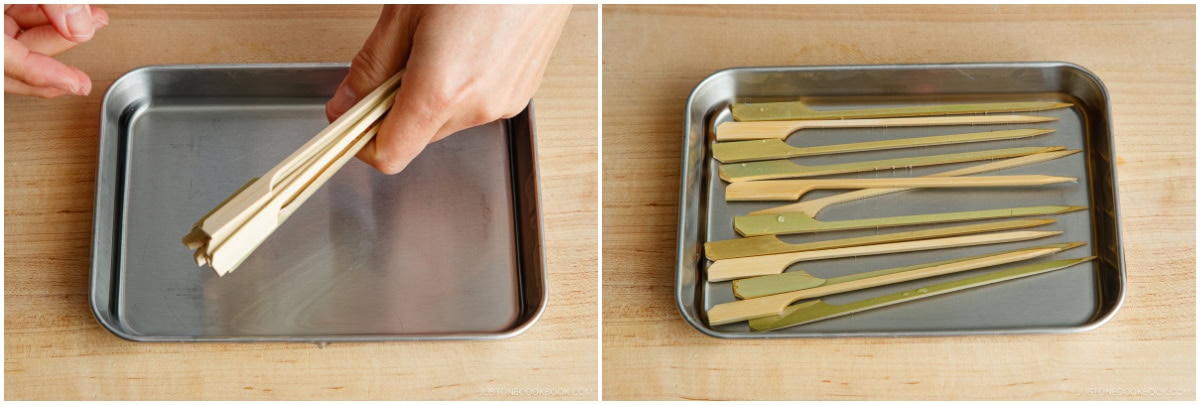
- Separate the green part of 2 Tokyo negi (naga negi; long green onion) from the white and light green parts. Cut the white and light green parts into 1¼-inch (3-cm) pieces. Cut the green parts in half crosswise.
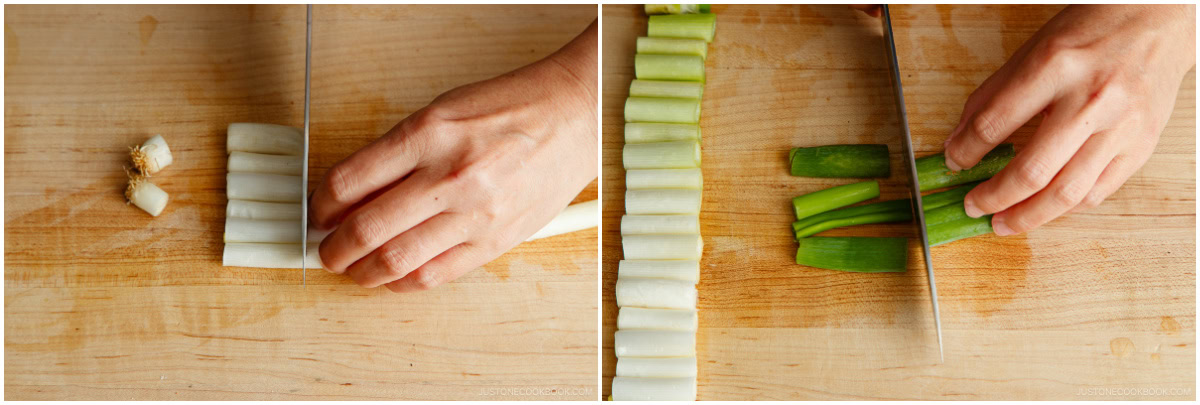
To Make the Yakitori Sauce (Tare)
- To a small saucepan, add ½ cup soy sauce, ½ cup mirin, ¼ cup sake, and ¼ cup water.
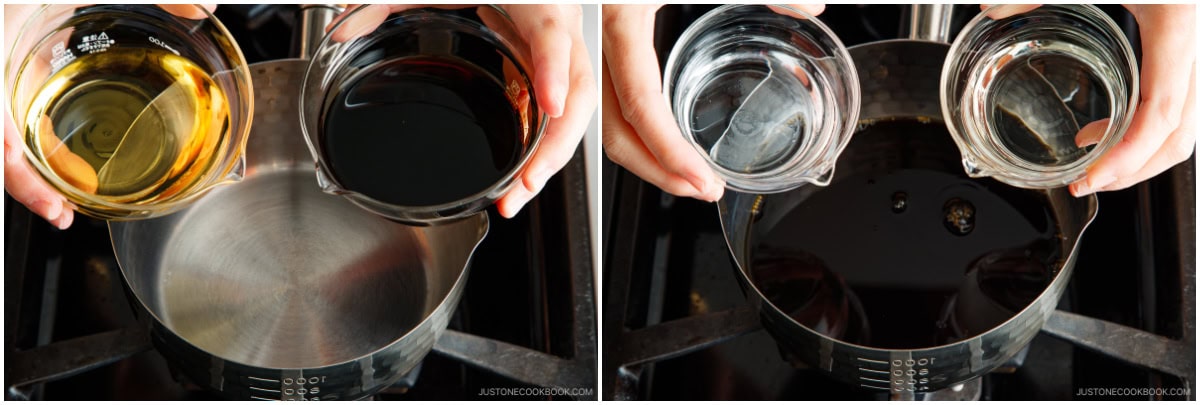
- Add 2 tsp brown sugar and the green part of the Tokyo negi.
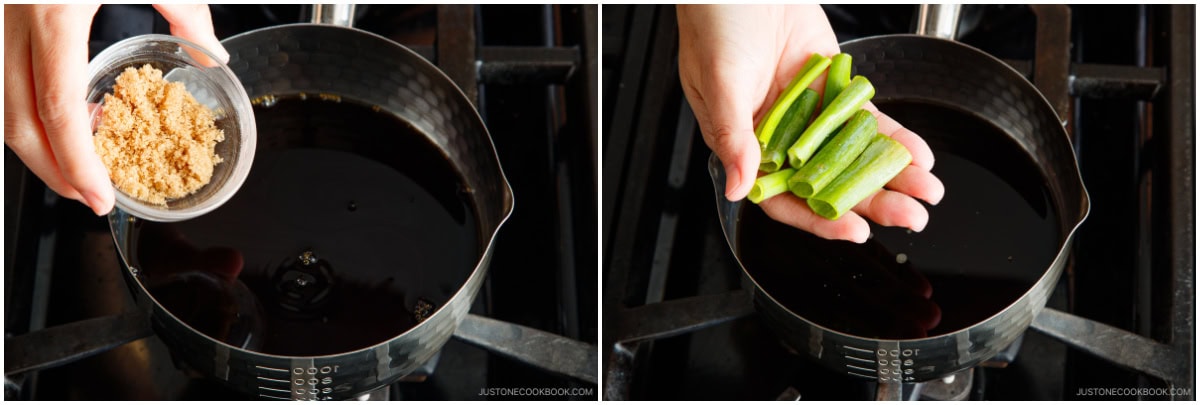
- Bring it to a boil over high heat. Once boiling, reduce the heat to low and simmer, uncovered, until the sauce reduces to one-third of its original volume. It will take about 30 minutes. Let it cool to room temperature before using. The sauce will thicken with a glossy shine as it cools. Tip: You can make the sauce ahead of time. To store, remove the green onion and pour into a mason jar. Keep in the refrigerator for up to 2–3 months.
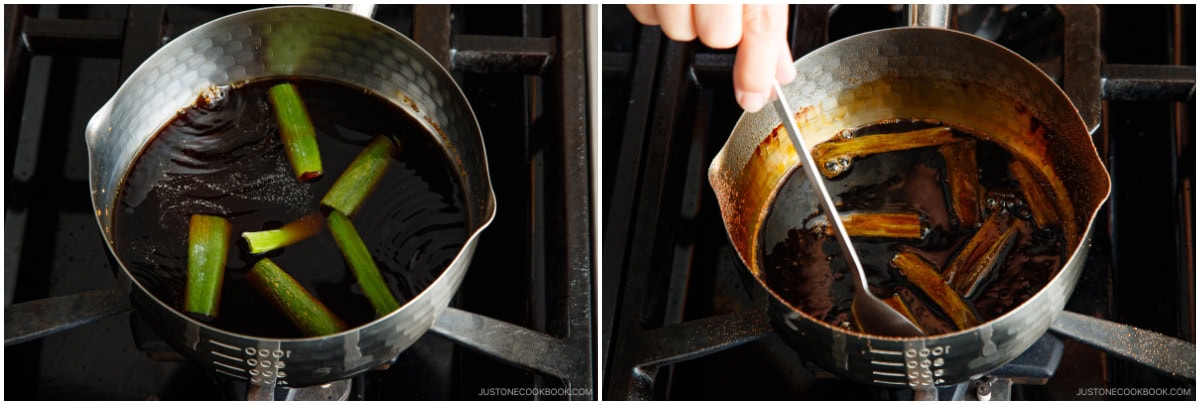
- Tip: If you want to serve your yakitori with extra sauce, reserve one-third of the sauce in a small bowl for final basting, just before serving. To prevent cross-contamination, use this reserved sauce with a clean brush only after the chicken is fully cooked.
To Assemble the Skewers
- Cut 1 lb boneless, skinless chicken thighs into 1¼-inch (3-cm) squares.
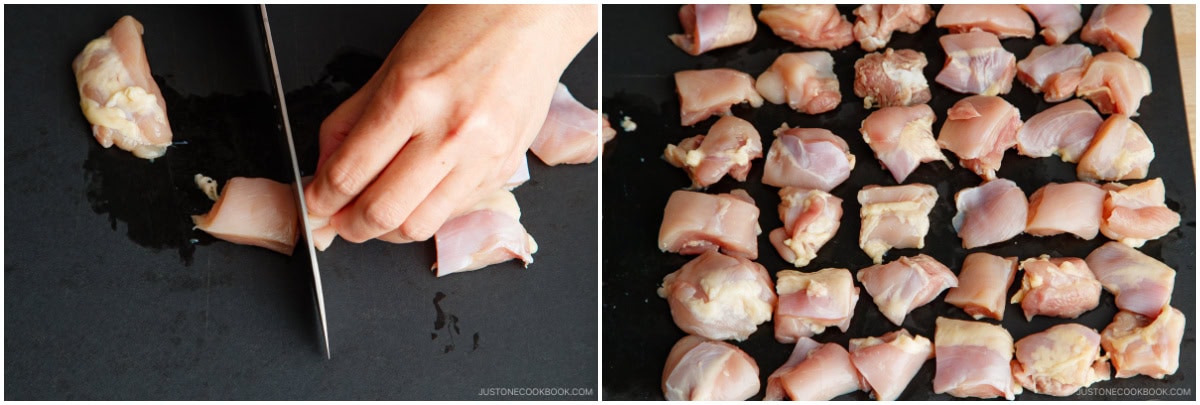
- On a flat work surface, fold a slice of chicken in half. Holding the skewer at a 45-degree angle, pierce the side of the folded meat. Then, tilt the skewer down so it‘s parallel to the work surface and thread it all the way through. Position the chicken next to the handle.
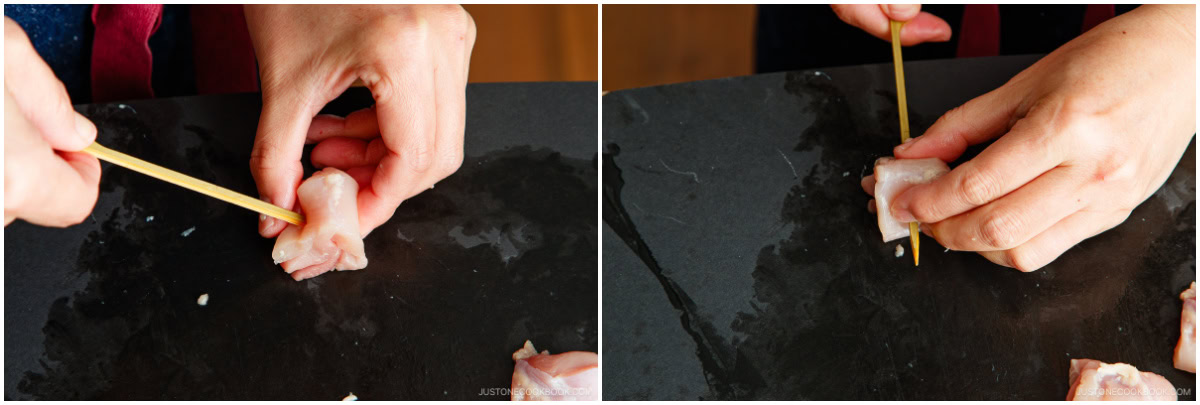
- Next, add a piece of Tokyo negi perpendicular to the skewer, packing it snuggly next to the chicken piece.
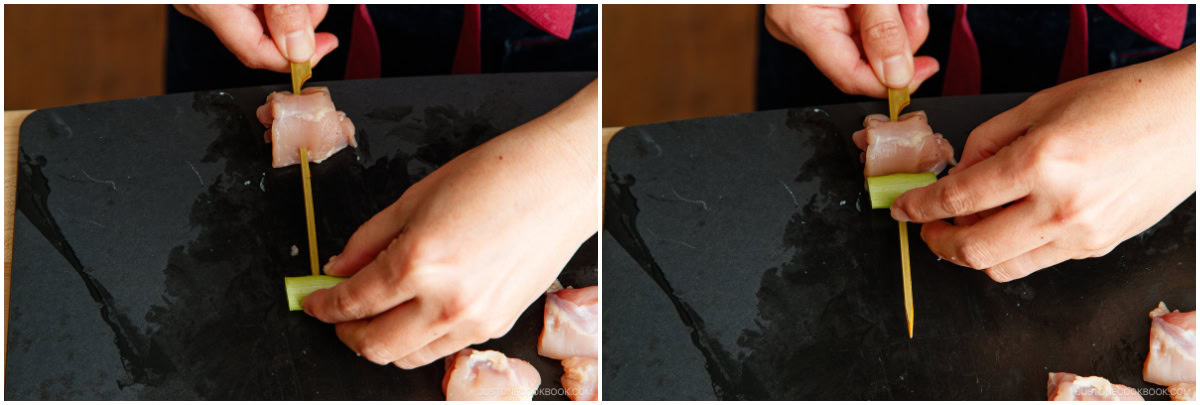
- Add another piece of chicken, then another piece of Tokyo negi.
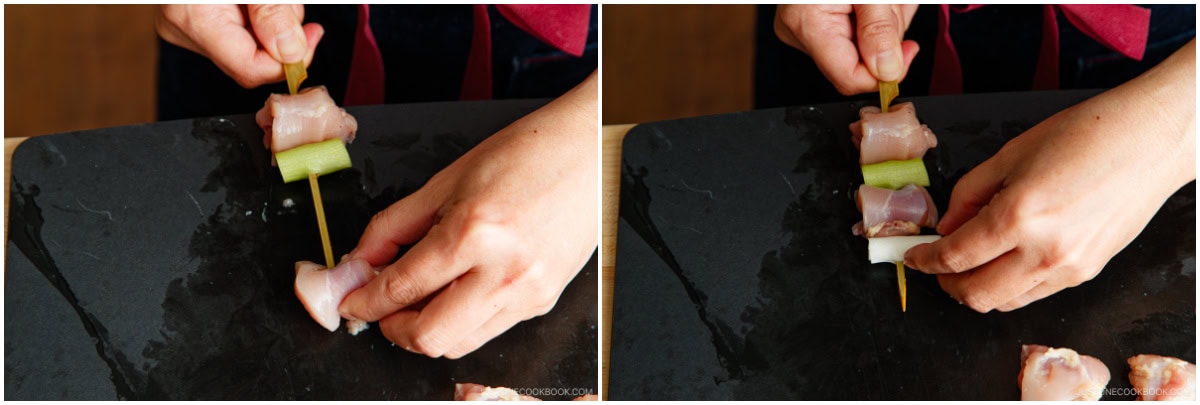
- End with a piece of chicken. Each 5-inch skewer will hold about 3 chicken slices and 2 Tokyo negi pieces.
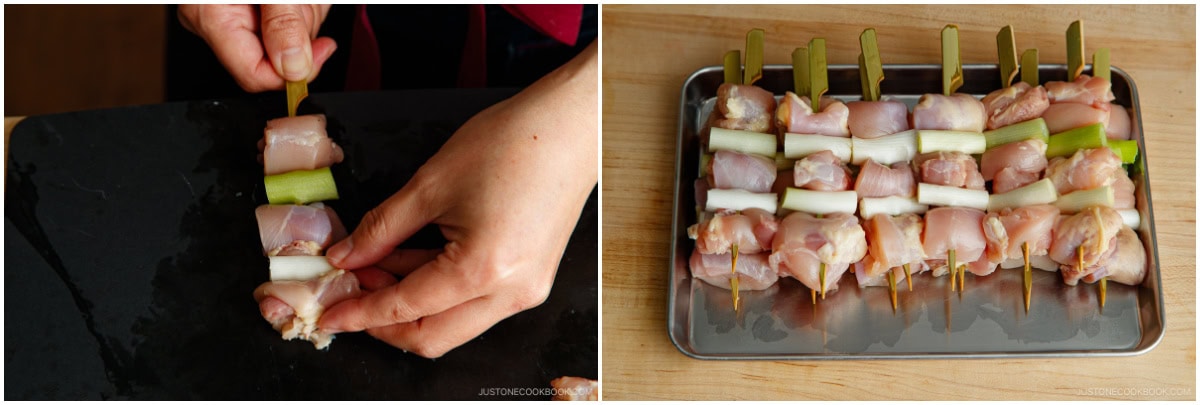
To Broil/Grill the Yakitori (recommended)
- Line a baking sheet with aluminum foil for easy cleanup. Place an oven-safe wire rack on top. Grease the grate of the wire rack with neutral oil to keep the chicken from sticking.
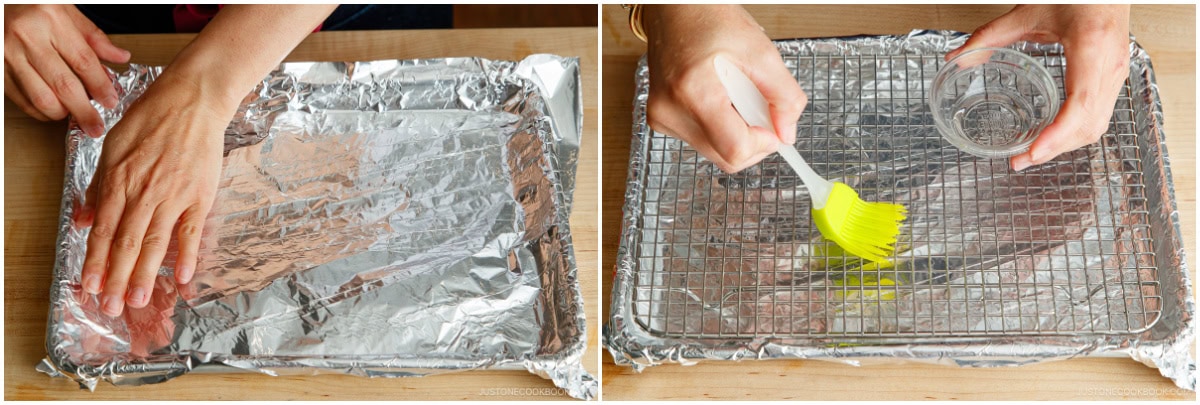
- Place the skewers on top in two rows, with the handles resting along the edges of the baking sheet. Cover the top and bottom of the handles with folded strips of aluminum foil to prevent burning.
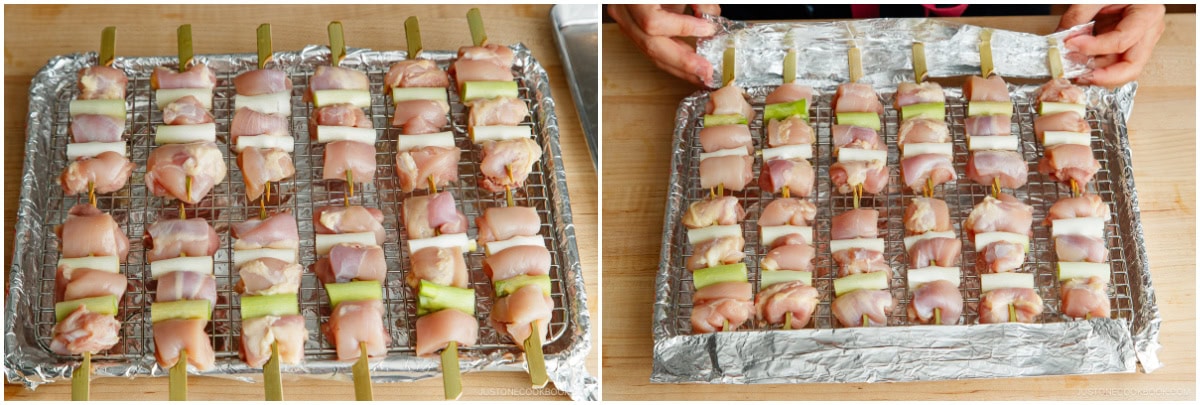
- Turn on the broiler to High (550ºF/288ºC) with a rack placed on the middle position of the oven, about 8 inches (20 cm) away from the heating element. Wait until the heating elements are hot, about 3–5 minutes. Then, place the skewers under the broiler. Broil for 6 minutes. Tip: When broiling, you don‘t adjust the oven temperature; instead, you control the distance between the heating element and the surface of the food. It‘s similar to using hotter and cooler zones on your grill.
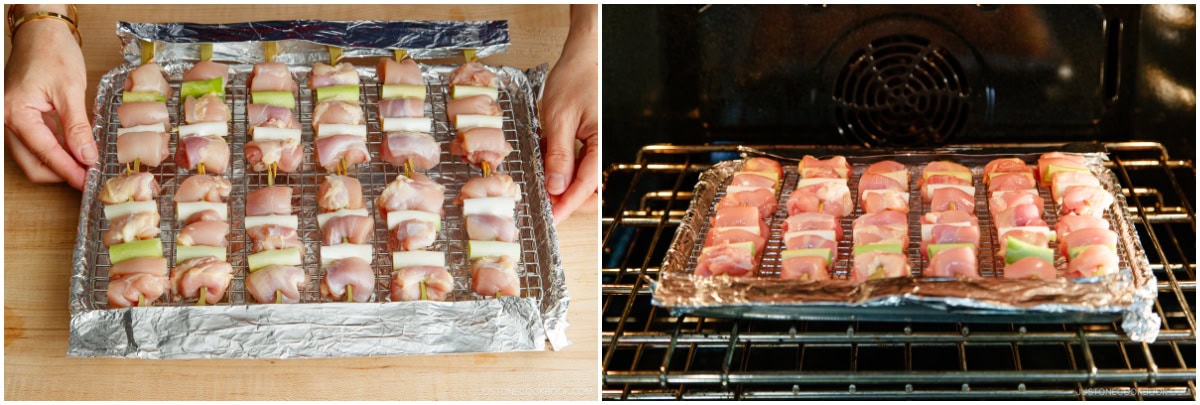
- After 6 minutes, brush the meat and Tokyo negi with the yakitori sauce.
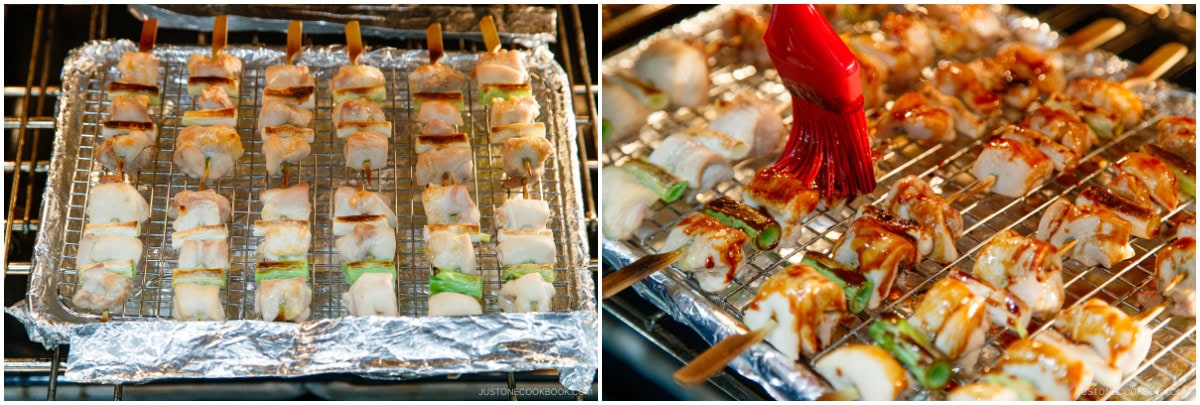
- Flip the skewers carefully with a pair of tongs. Brush the sauce on the other side. Continue to broil for 3–4 minutes to caramelize the sauce.
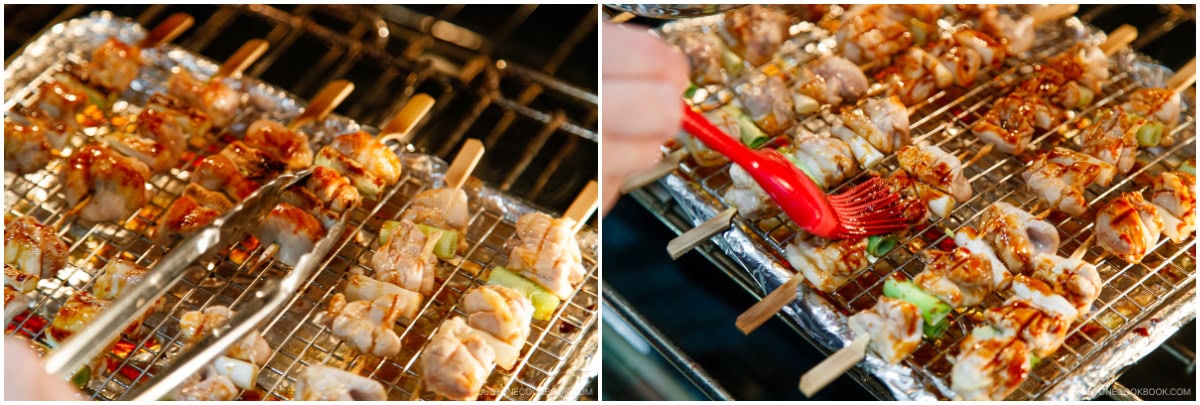
- Finally, flip one more time (this is the presentation side). Baste with the sauce, then broil for an additional 1–2 minutes. Remove the baking sheet from the oven.
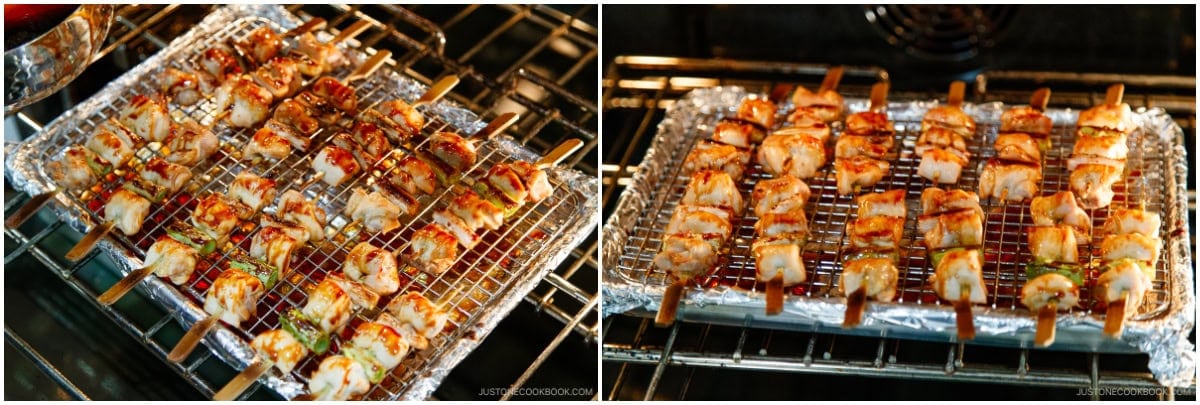
To Pan-Fry the Yakitori (optional)
- Heat a large frying pan on medium heat. When it‘s hot, add about 1 Tbsp neutral oil. When the oil is hot, place the skewers in the pan in a single layer (you may have to cook in batches). Cook until both sides are brown, about 5 minutes each side. Then, cover and cook on low heat for 2–3 minutes. Add the sauce to the pan and cook until well coated on both sides. Remove from the heat.
To Serve
- Transfer the skewers to a serving plate, presentation side up. Optionally, with a clean brush, baste the top of the chicken skewers with the reserved sauce. Serve with shichimi togarashi (Japanese seven spice) and enjoy!
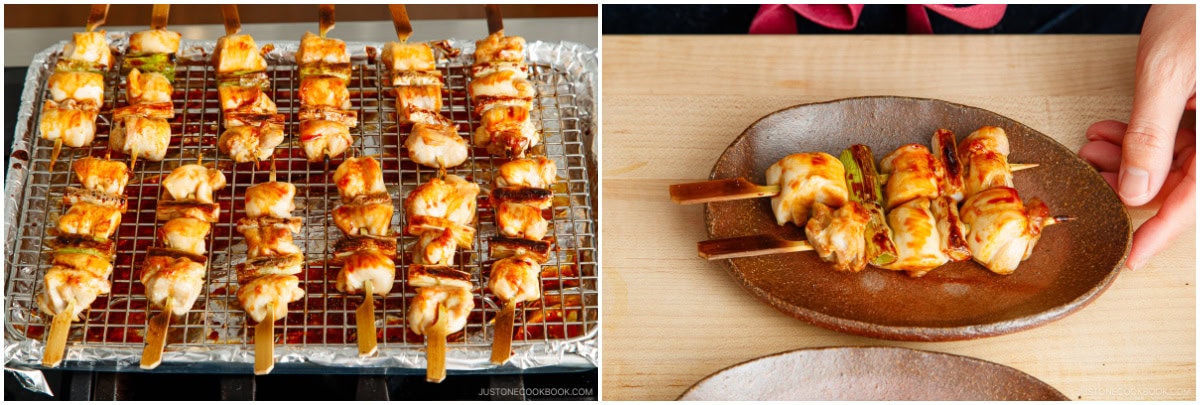
To Store
- You can keep the leftovers in an airtight container and store in the refrigerator for up to 3 days or in the freezer for up to a month.
Nutrition
Editor’s Note: This post was originally published on Apr 13, 2014. It was updated with new step-by-step and final images on April 18, 2024. The post was republished with more helpful information on January 29, 2025.
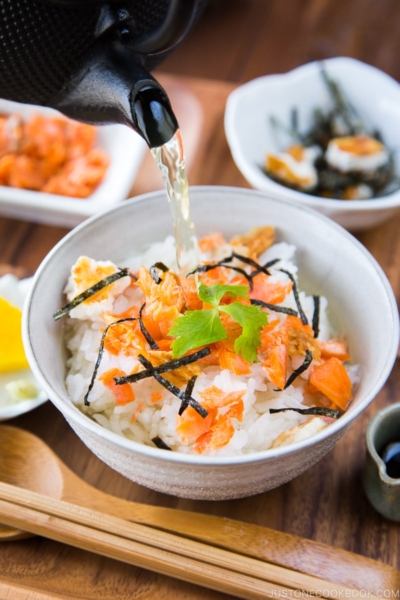
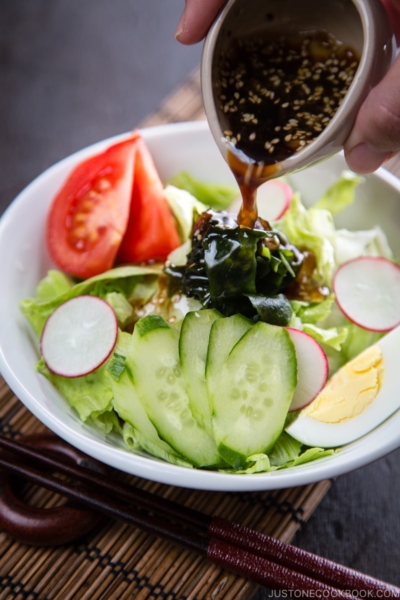
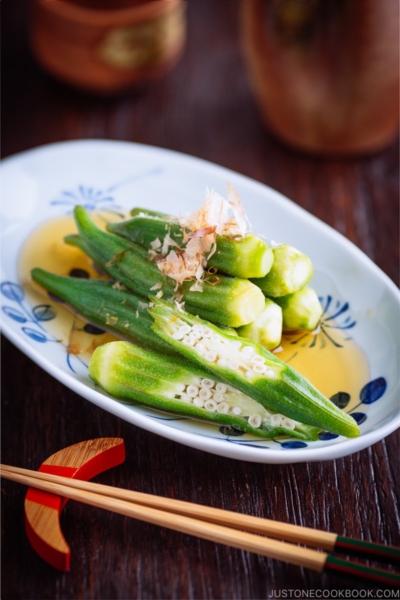
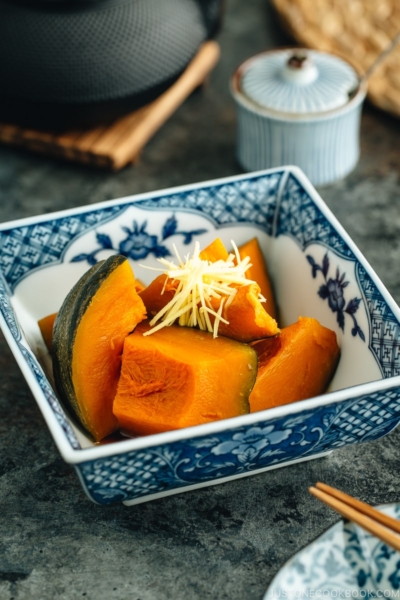





Hi Nami
Can you advise if the Tare could be prepared and store up in advance?
And the right way to store it? Tia!
Regards
Janice
Hi Jan! Just in case you didn’t receive my answer to your previous question… Yes you can make ahead of time and please keep in the fridge. It can store up to a month. 🙂
Hi Nami!
Can i prepare more Tare in advance and store them the same way how i keep bottled sauces in the kitchen cupboard? Tia:-)
Hi Jan! Yes, I recommend keeping in the fridge. 🙂
What’s the difference between teriyaki and tare sauce?
Hi Brennan! The ingredients are same/similar – but different ratios and different ways to make it and use it. Yakitori no tare is always made separately. While teriyaki style sauce is always made inside the pan (we don’t make teriyaki sauce separately – although I made a recipe and you can find on this website). Typically in Japan, we season the ingredient – chicken or fish or whatever it is – with soy sauce, mirin, sake etc inside the pan/pot. That’s the main difference, I think.
Thanks for the information!
You’re very welcome. 🙂
I have made Yakitori before and the Tare you suggest I believe has 2 tsp brown sugar and it should be 2 T. 2tsp sugar is not enough to develop a syrupy mixture after reducing in 1/2. TKS
Hi Leonard! I did use 2 tsp brown sugar just for the flavor (many Japanese traditional recipes you may find do not include brown/white sugar). Once you reduce and let cool, the sauce gets thicken, but it’s not thick like “corn starchy slurry” syrupy texture like packaged Tare may have. 🙂
Dear Nami, I made these last night and they were so easy and super delicious! This is going to be a regular in my house!
Hi Eliza! Aww I’m so happy to hear that you enjoyed this recipe. Thank you for your kind feedback! 🙂
This sounds great. My acting class this week is studding films form Japan and China. I think I’ll try to make this for them.
Hi James! Wow that’s cool! Hope you enjoy Yakitori in your acting class! 🙂
Is there anything in the world better that stopping at a yakitori stand under a railway station on the way home and grabbing a few skewers of yakitori? I love every variety. Eat until your content and count the skewers, all with a cold Yebisu.
I have been using the recipe for tare from Shizuo Tsuji which incorporates chicken bones for flavor. I like to dip my skewers in the sauce during grilling so the drippings from the various meats enhance the sauce. I simmer it after use and store the remainder in the freezer for reuse.
Hi Bkhuna! Hmmm that sounds like a really nice idea! Thanks for sharing your tip!
This was a great tare and went perfectly with our tsukune. My partner and I lived in Japan (and met there) so this brought back fond memories. Thanks!
Hi Evie! Awww! I’m so happy to hear you two enjoyed this recipe! Thank you for trying this recipe and for the kind feedback. xo
What brand of mirin do you use? I wanted to know if I should left out the sugar because my mirin has a ingredient list that i’m not happy with (sugar and corn syrup despite being hon mirin…). Per 100ml it has 41,7g of sugar is this the normal amount? Thanks in advance
Hi Catarina! I use Hon-mirin (real mirin) from Japan (that I buy from Japanese grocery store), and doesn’t include corn syrup etc. I explained the difference on this Mirin page: https://www.justonecookbook.com/pantry_items/mirin/
Hello there. I just wanted to say thank you sooo much! These recipes are amazing and delicious! My husband and I went on our honeymoon to Japan for almost a month, back in November. I have been using your recipes and just bought your book, because we despartely miss Japan and the food we had there. I have made this recipe many times and use maple syrup instead of brown sugar and we love it! Also, I am obsessed with your Japanese Curry recipe too. Amazing and tastes so much like the one we had in Okinawa! 🙂
Hi Kari! Thank you for writing your feedback. I’m touched by your kind words and I’m so happy that you’re cooking Japanese food at home! Congratulations on your wedding, and I hope you two had a fantastic honeymoon in Japan. Thank you for sharing your tip on maple syrup for the sauce. I’ll try it one day! 🙂
Hey! I tried to make the sauce on the low heat setting, but I don’t think it was reduced much and it was still extremely liquid at the end. Should I just try a higher setting while keeping 30 minutes next time? How thick should the sauce be in the end?
Hi Tobias! The liquid is going to be thicken and about half of what you started. You might take a longer or shorter time depending on the stove, but keep it simmering. So 30 mins is just the guideline. As the sauce gets cooled, it gets thicken more too (as it continues to evaporate). 🙂
Thanks for the reply, Nami! I’ll keep it at low then and will try if it helps doing it longer next time. I was just worried because it didn’t seem like much happened at all.
Hi Tobias! Sorry for my late response. Yes, keep going until it looks thicken (not thin), then while it cools down it will even thicker. 🙂
Excellent got the name of the dish from a video game
Hi Donna! Oh that’s cool! 🙂
What is the method if you are using a grill? Do you marinate the chicken and/or scallions? Thanks 🙂
Hi Sumi! If you prefer to marinate the chicken, I recommend marinating for 30 mins or so and not overnight. It’s too salty, so we usually brush the sauce while cooking, not before cooking. 🙂
I came across your website by chance and I LOVE it!!
Thanks for putting in the hard work and sharing your recipes, I will be visiting a lot for sure.
Hi Yvonne! Whoo hoo! I’m so happy to hear you found my site! Hope you find some recipes that you like here. 🙂 Welcome to JOC! xo
I made this Yakitori recipe for the 1st time today in the broiler and it was delicious.
Last year, I wrapped 4 bricks with aluminium foil and spaced them in 2 rows to simulate, on my Weber, a real Yakitori Grill using Real Wood Lump Charcoal underneath. This will be my goto method for the rest of this year.
Your homemade Yakitori sauce is excellent!!
Hi James! Thank you for trying this recipe in the broiler. I’m glad to hear you enjoyed it!
Wow your homemade yakitori grill sounds AWESOME! I’ll suggest Mr. JOC to do the same in the summer!
I love this yakitori sauce too. So good! 🙂